Rosie Shuster Saturday Night Live Alumni
- Details
- Category: Interviews
- Published on Saturday, 22 December 2018 16:18
- Written by Dianne V Lawrence
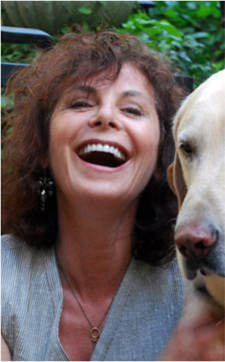
TNN: Rosie, why don't you start by telling us how Saturday Night Live came to be?
Rosie: I have to start really, really far back when Lorne, then Lipowitz, followed me home from school when I was 14 years old.
TNN:You're referring to Lorne Michaels
Rosie: At my mother's insistence, Lipowitz became Michaels. My father was in a comedy team in Canada called Wayne and Schuster and they were performing on Ed Sullivan shows, which were live from New York on the weekend.
TNN: I grew up watching your dad on Ed Sullivan. My father loved Wayne and Shuster!
Rosie: It was a Sunday night, live comedy variety show watched by all of North America, so there was a template that went way, way, way back. Lorne and I also went way back. We did comedy sketches together at high school, summer camp and college. Howard Shore was involved in some of those camp shows. I went on to write with Lorne for Canadian television, including the Hart and Lorne show for CBC. Just like my dad, he found a shorter, funnier Jewish guy to be his comedy partner. He played the straight man, but his real talent was in producing. Bringing people together. Danny Aykroyd and Gilda Radner were on a few of those shows. So Lorne's career began to really resemble my dad's comedy career and that became the nucleus of SNL. I also came to Los Angeles and worked with Lorne on a Lily Tomlin series for ABC. Laraine Newman was there. Marilyn Miller, who was also an early writer for SNL, was also one of the writers for Lily’s show. So, when SNL was going to happen in New York City, of course I went along.
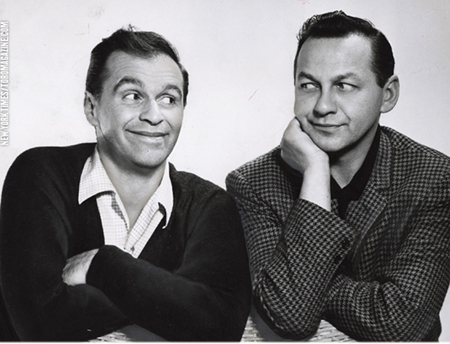
TNN:What was it like when you all got together in the room that first time and you were ready to produce the very first show.
Rosie: The group got together in late August and the first show aired on October 17th. There was a long incubation period where everybody was kind of falling in love with each other and cracking each other up, trying to find their place, have a voice. We were stockpiling a lot of commercial parodies. You could feel something organically happening amongst us.
TNN:Where did Lorne draw people from?
Rosie: Gilda, Danny, Belushi and later Bill Murray came from the Chicago and Toronto Second City. Then there was Chevy and Michael O'Donoghue, who came from the Lampoon. Laraine Newman came from the Groundlings in LA.. Garrett Morris started off as one of the writers. Michael O’Donaghue was an important force shaping the show in the early days. His humor was very exact and precise. He crafted lines that were honed to a voodoo acupuncture point.
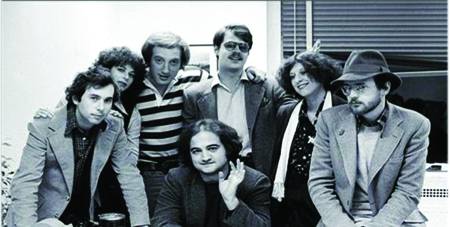 L-R Tom Schuller, Rosie, Allan Zwiebel, Dan Ackroyd, Elaine Miller, Michael O'Donaghue, John Belushi in front.
L-R Tom Schuller, Rosie, Allan Zwiebel, Dan Ackroyd, Elaine Miller, Michael O'Donaghue, John Belushi in front. TNN:So it took, what? Two or three months before the first show happened?
Rosie: It took just under two months and don’t forget, it was live, which was unique at the time. You have to remember in the mid-seventies, there was Watergate and Vietnam. Rock music had broken out in the sixties as well as a lot of films like the Jack Nicholson kind of movies, Five Easy Pieces. They reflected the revolution in consciousness that came out of the sixties but television was still square as hell. So part of the impetus of the whole show was to just shake things up and to reflect back what was happening in the culture, the edginess and spontaneity that wasn’t happening on television.
TNN:Talk about the very first show.
Rosie: The first show was George Carlin, who was flying on blow. Nobody got close to him. He didn't integrate with the cast. There were a lot of sketches on that first show. I created a commercial parody called “New Dad. Tops and Pops.” If you lose your husband, sure you're covered financially but what about your physical needs? I came up with this other surreal idea around bee’s. One liner ideas, like the bee hospital. “Congratulations! It's a drone. Congratulations. It's a drone. Congratulations. It's a drone.” They set me up in great opposition with John Belushi and put him in a bee outfit with the little antenna bopping around. He was like a macho man in these fruity ass bee costumes. People loved it. Lorne used to like to put them in those costumes.
TNN:What were some other pieces you created that we would recognize?
Rosie: Well, the Nerds got really popular. Bill Murray and Gilda Radner playing Todd and Lisa.
TNN:That was one of yours!?
Rosie: Yes, and the first ever Roseanne Roseannadanna also played by Gilda, was in a sketch I wrote. It was like a public service announcement that encouraged people to “Hire the Incompetent.” She had that big wig but didn't have the name yet. Gilda mentions my name in her book “Love Gilda.” I used to write some surreal public service things. I wrote the first ever Emily Litella with Gilda. It was based on her nanny.
TNN:Which one was the Emily Litella character?
Rosie: The little old lady who was always hard of hearing and sat on News Update with Chevy and would have complaints like “What's all this I hear about presidential erections!” Chevy would correct her “It’s ELECTIONS!” and she would respond with “Oh, that's very different… nevermind.” I also wrote some of the Baba Wawa sketches, [a take-off on Barbara Walters] a character Gilda brought in. I wrote a lot of these with Anne Beatts. We wrote in a team.
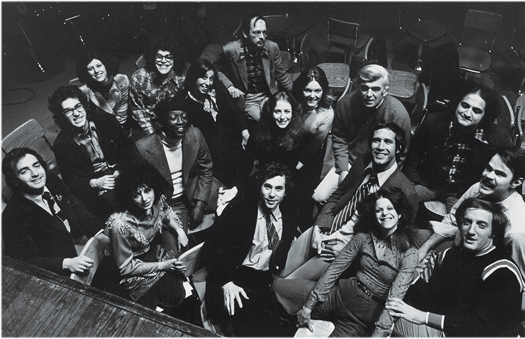
TNN:Let’s talk about women in comedy at that time. We had Lucy, we had Mary Tyler Moore…
Rosie: Elaine May was a comedy god in the sixties. As far as pure sketch comedy, Lily Tomlin was supreme. There was one early piece that I wrote with Ann for Lily Tomlin called “The Hard Hats” but no guy wanted to play the sex object. Belushi couldn't handle it and finally, Lorne made Danny do the sketch. We really did have to break a lot of glass ceilings because guys talk to each other and it was difficult for a woman to insert a female point of view into the conversation. Now there are a lot of strong women in comedy, but in those days there weren't.
TNN:What was the work schedule like? You had to create a show from scratch in five days.
Rosie: Monday the host came in and we pitched ideas to them. It usually was an early night. Tuesday we came in at noon. It was the day all of the writing happened and we worked through the night sometimes into Wednesday morning. Wednesday was the read through and you were just hallucinating by then. Beatts and I would often write around three sketches.
Saturday Night Live was unique in that if you wrote a piece, you went to costumes and said what you needed, you went to props, you went to the scenic design and said what you were thinking of. There wasn't time for Lorne to do too much of that. He did some top down producing and some course correcting, but we actually got to mount and do our own little productions, so that was pretty cool.
After read through, Lorne would sit with the host, go over all the sketches and the ones they liked went on cards. The cards were then placed up on a board to get an overview of the show. There was also the News Updates segment, little films and musical guests that filled out the ninety minutes.
Thursday and Friday were for camera blocking; you blocked half of it on Thursday and half of it on Friday.
Then Saturday was a monster day. There was a tech-run through, then dress rehearsal with an audience. After dress rehearsal we all met in Lorne's office where some things got cut, some things got tightened and then suddenly we had a live show. And an occasional baffled host was just like, “What? This is live? Wait, When do we tape?” A few were pretty drunk at dress. Then Sunday off, if you got home. I often got home at 6 am.
At some point Danny and John had the Blues Bar and slowly over time you started to see all these A-list celebrities hanging out. The whole thing mushroomed into something crazy nobody could have anticipated. There really was nothing like it. And because it was live from New York, there was a danger element to it that no TV had. It wasn’t Perry Como singing songs on a couch.
TNN:How did people sustain the energy?
Rosie: We burned out like crazy. There were drugs, some people went nuts. There were relationship and marriage split ups, and the stress showed. People just blew gaskets. It was too much. You got burned out and very self-referential 'cause your whole life had become the show. You really didn't have that much time to live a life and see what was happening with other people. It became a bubble.
TNN:How long were you there for?
Rosie: I was there for the first five years. Then I was off and on through the eighties. I helped create the Church Lady with Dana Carvey and wrote a bunch of Church Chats. I wrote a Tyrone sketch for Eddie Murphy that he used when he was being honored for the Mark Twain Award at the Kennedy Center.
TNN:What are some of other things that you've done?
Rosie: Well I wrote for the Broadway show, Gilda Live with Michael O'Donoghue, Marilyn Miller, Alan Zweibel and Anne Beatts. It was a big hit at the Winter Garden Theatre with Mike Nichols directing. He then turned it into a film! It was really sweet. I made a movie with Mike Nichols! In the early nineties I was a writer and producer for the Carol Burnett Show. I also did the Larry Sanders Show with Gary Shandling and one of my scripts got an Emmy nomination and a Cable Ace nomination. I also wrote a lot of movie scripts for MGM, Tristar, Warner Brothers and Orion.
TNN: Rosie! Wow!
Rosie: And it all started with Lorne following me home from school and saying hello to my father.
10th Anniversary. Couldn't Have Done It Without Them
- Details
- Category: Interviews
- Published on Monday, 20 August 2018 18:45
- Written by D.V. Lawrence
First - The following people gave much-needed support in the beginning either through encouragement, donations, sharing their experience in publishing, or all three.
Buck Henry and Irene Ramp, Cecilia Uribe, Denise Domergue, Gary Kemper, Jay Levin, Laura Meyers, Leonard Cohen, Peta J. Torokvei, Steve Wallis, The Marketing Action Group Network.
Then - the following women miraculously showed up just when TNN needed them. Their ongoing dedication and commitment in the early years was instrumental in helping to establish a solid foundation for the paper.
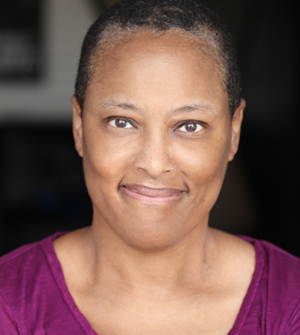 DAWN KIRKPATRICK
DAWN KIRKPATRICKI found out about TNN when I moved to Mid-City, LA., over seven years ago from Ann Arbor, Michigan. I ran across a copy while shopping at Ralph’s one day. At the time I was looking for ways to get writing samples. I remember finding a phone number to contact the publisher of TNN, or Dianne, and called her. She enthusiastically invited me to come over and said some other people interested in writing for TNN were stopping by as well.
I remember arriving at Dianne’s apartment and meeting her and three writers who were already contributing to TNN and two other women who like me wanted to write for the magazine. That meeting helped change my life. I started out as a writer for TNN but eventually started photographing as well. Thanks to Dianne’s encouragement, direction and willingness to take a chance on my budding photography skills, I changed my focus on writing for TNN to providing photographs for the magazine instead. Thanks to Dianne and TNN I’ve had the opportunity to photograph such great events as Smokey Robinson appearing at a local middle school to present a check for 1 million dollars for arts education! I have also pursued further education in this profession and started my own business.
Thanks, Dianne for all the great photo assignments and thanks for creating TNN. Congratulations on your 10-Year Anniversary!
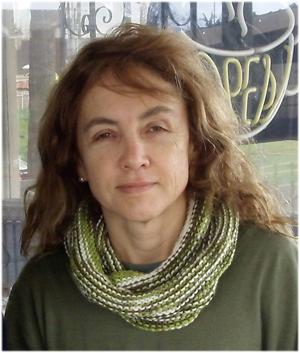 RENEE MONTGOMERY
RENEE MONTGOMERYBordering on the fringes of Koreatown, Crenshaw and Mid-Wilshire, Mid-City is a crazy-quilt of weird and wonderful adjacent cultures: Greek temples besides El Salvadoran 99 Cent Stores, Buddhist retreats backing up to Renaissance libraries, and Latina fortune tellers neighboring Korean driving schools. For three of the early years of TNN I covered the growing cultural beat, restaurants and architecture. Regularly cruising the neighborhood looking for stories, I wasn't on my route very long before I would encounter a new art gallery or, let's say, an Evangelical missionary parade. Favorite stories were the Yuppet marionettes , the legendary First A.M.E., the Black Doll Exhibit,
To me, Dianne Lawrence represents the Wild West success story, an immigrant finding a home in L.A., establishing a distinguished record of amazing artistry, rambling around in her old Volvo, building a business brick by brick. Although I moved to Oakie Oklahoma for family reasons, I fondly remember my time documenting Mid-City's ever changing culture in the Neighborhood News.
 CARLA PINEDA
CARLA PINEDAWhen I bent down to pet Dianne's dog Foxie, I had been photographing a youth conference put on by a community leader at Leslie N. Shaw Park. I was fresh out of college, back at the 2nd Avenue home I grew up in with my parents and trying to reestablish my relationship with a community that had reared me from my first waddling steps to my adult life. I wanted to strengthen my relationship with my neighborhood while taking tentative steps into a career in journalism during some of its most uncertain times. I was also looking for a place where I could tell the stories of my community after spending the previous five years telling the stories of my college town.
With Foxy, came Dianne, and her friendly, curious and direct nature that has touched many of us in the neighborhood. “Fantastic. I’m starting a community newspaper. We should work together.” And just like that, we exchanged contact information and Dianne gave me an opportunity to join her growing power group of local contributors documenting the stories about a community in a way nobody else in the city was doing.
During the past 10 years, we’ve shared many phone calls, emails and conversations about where “Spirit” is taking us, not only for The Neighborhood News, but in life.
One of my favorite reports was about the giant Mid-City shopping development at San Vicente and Venice that blocked some of the best views in the neighborhood. Because I was working at a commercial real estate newspaper at the time, I took advantage of the expertise of my architect and engineer friends to help me analyze public records. We discovered the public had not been warned the views would change. In fact, the public records approved by city officials stated the development would have no change to the community’s aesthetics. The Neighborhood News kept up on the story for nearly two years as the community fought to have their councilmember finally address their concerns, and TNN was instrumental in bringing him to their table.
Another project that I was proud to take part in was our coverage of the homeless population that took place over a year. TNN consistently published resources for them and forged a bridge for the community to understand their less fortunate neighbors. I remember, in one day I went straight from interviewing the senior lead officer at the Los Angeles Police Department’s Southwest station to interviewing a homeless individual on the curb of a gas station.
Dianne has always thanked and shown appreciation to the team for making the past 10 years possible. But I’d like to take this opportunity to thank her personally for telling the stories my community deserves to hear and for helping me reintegrate into the community that raised me. The Neighborhood News assignments have unknowingly picked me up off the floor after defeat, heartbreak or the unforeseen. And I could not feel more grateful to TNN, Dianne or “Spirit” for their guidance.
{jcomments off}
Kitty Bungalow's Shawn Simons
- Details
- Category: Interviews
- Published on Thursday, 06 October 2016 17:23
- Written by Dianne Lawrence
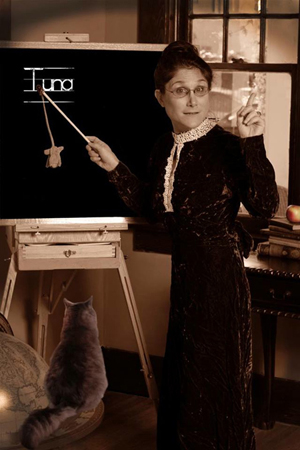 TNN:Tell me what your volunteers do?
TNN:Tell me what your volunteers do?Shawn: We call them teachers. We have 5 shifts a day and 13 people per day. We are a 100% feral cat rescue and the only all feral (wild) socialization [helping them feel comfortable with human contact] facility, so part of the work that's being done by our “teachers” is the socializing of the cats. We have different people that come in to help break down the cat's fears and anxiety levels. It's not just I'm going to go in and pet this one. You really have to know what level the cat is at, what is the next obstacle and what can I do to help get them over that next obstacle. There are different techniques and a “lesson plan” as we call them that can help them move through things.
Most organizations run things through foster networks and the cats may get used to that particular foster. In other facilities, a lot of times they don't let volunteers go into the feral room. We just discovered that the more people that are in there, touching them and breaking down those defenses the quicker they become tame and adoptable.
TNN:Do the volunteers do anything else?
Shawn: There's a lot of poop scooping and a lot of cleaning that is necessary. It addresses the medical care of the cats. You can't have some sloppy poo on the side of the litter box that hasn't been washed off because it may be covered in Giardia that someone else is going to step in and eat and re-infect. The other activity has to do with ease of use of the space for other volunteers. You have 80 different people coming and going so things need to go back where they belong.
TNN: Tell me about the activities of the TNR (Trap Neuter Return) volunteers.
Shawn: The foundation of Kitty Bungalow is built on TNR. While the group is smaller I have to say the TNR volunteers truly do some of our most important work. Feral cats are coming from the streets and they are coming from unfixed cats that are in your yard and behind the bush and maybe you didn't even notice that one because you didn't go out at 3:00 in the morning, but they are everywhere. It's those cats that are clogging up the shelter system and causing a kill rate in our city that is unpalatable.
TNN:What is that rate?
Shawn: For cats it’s about 50% of the cats brought in the shelter are killed. Dogs are at about 11% kill and an 89% live and release rate. 90% live is considered a no kill shelter. L.A. is almost there. It is the cats that are keeping us from no kill.
It should also be said that 76% of all of the animals killed at the city shelters are kittens 8 weeks and under. That has to do with the amount of time and attention that it takes to hold on to those kittens before they can become adaptable. Taking little stray or abandoned kittens into the shelter, they are most likely going to go out the back door dead. The TNR work that we do is prophylactically stopping the adult feral cats from having kittens that end up in boxes in the shelter.
Being a TNR volunteer is not as fluffy or adorable as being a teacher at Kitty Bungalow Charm School for Wayward Cats, but our truancy department really is the lifesaving work. Because of an ongoing injunction which is rolling into its 7th year, there is little that the city can do for feral cats. Adult feral cats that come into the shelter have to be held for 5 days per the state law, then they are marked for death because they are feral. But we have a new program. Thanks to the backing ofNKLA (No Kill Los Angeles) Coalition and Best Friends.
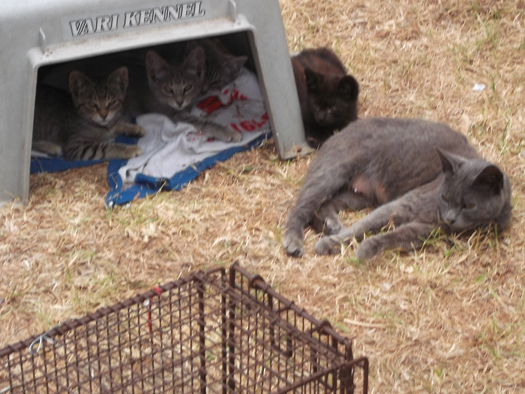
Best Friends came into Los Angeles and created a coalition called NKLA and invited all of the groups to come together and work together. As a much larger well-financed organization, they had the ability to help with grant funding and supporting the smaller organizations that are boots on the ground to really try and make some positive motion that the city can't do.
TNN: Do they support your activities?
Shawn: Best Friends gave us a grant for a program called Working Cats. Because of the injunction the shelters cannot release feral cats to rescue organizations. They have to be adopted. We are taking death row feral cats and our Working Cat program finds businesses that are looking for mousers to adopt and we've had some really good success with some local breweries, with some horse farms. We are looking to expand that program to help those cats. It's their only way out.
 TNN: Any businesses that have a mouse problem and might need some feral cats should also contact you. How long has that program been in place and how is it working?
TNN: Any businesses that have a mouse problem and might need some feral cats should also contact you. How long has that program been in place and how is it working?Shawn: For about a year. It is a very difficult program to launch. We are a volunteer-run organization and for every program that we add it adds additional work. But I feel confident we can build on the success of this year.
TNN: Am I hearing you say you need additional volunteers?
Shawn: Yes. We also just bought a new space and will be moving into it on Martin Luther King between Western and Venice. It will triple the space of our organization and also provide a resource center for community. A lot of people who need us most don't know that they can Google us. They don't know that there are loonies like us that are dedicating our lives to do this.
TNN: What kind of people need you the most?
Shawn: I think a lot of lower income, a lot of immigrant neighborhoods.
TNN: They are experiencing large feral cat colonies?
Shawn: Exactly. I think young Hollywood and affluent areas know about TNR so they look us up and they find us but they have the capacity to handle the situation with just some support from us rather than turning over the responsibility to us. We can support them but need them to be more involved in the rescues so that we can really guide our limited resources to the areas that really, really need the help.
TNN: What kind of volunteer skills are you looking for?
Shawn: All kinds. A lot of our volunteers really love animals but in order to run an animal organization, you also need people who can talk to people, to reach out and be what we call Kitty Bungalow cheerleaders. People who can go out into the community and do events, be at the farmer's market and help to let people know that we are around and can be of help and they can come to us and adopt the animals. They can donate. We also need people who can be a bus driver twice a month and drive our cats to the vet. That works for those people who have very busy lives. I need someone who can help me clean out my computer so the little round spinning thing stops giving me vertigo.
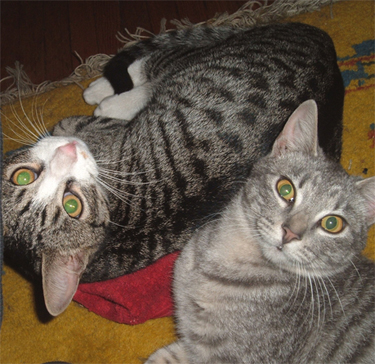 TNN: Walk us through what happens when somebody has discovered or is dealing with a feral colony and they need your help.
TNN: Walk us through what happens when somebody has discovered or is dealing with a feral colony and they need your help. Shawn:The best way to reach us is on our website. While we carry our phones around all the time, we are usually covered in cats or in the middle of something and don't really have a lot of time to answer the phone. On our website, you can find the category for your problem. If you have feral cats, there is an application to fill out and put as much information as you have. The more you include, the quicker we can work out a plan with you and your particular situation. I have noticed from running a charity for 7 years that people want the charity to do it. The persons good deed is calling the charity and passing the cat on. "Okay, I'm going to do something good. I'm going to call this charity and I'm going to get them to take care of this."
TNN: I think anybody who does rescue work is familiar with that. They are the person in the neighborhood who everybody calls.
Shawn: What we are looking for is partnerships. Working with people who can assist us as we assist them so we can be more fully available for those people who have no resources but want to help. Maybe they can't take an animal in or are being hounded unfairly by a landlord or they don't have a mode of transportation, or a network.
Now if we are dealing with a very large colony, we send out a team and we work with the community partner to get the cats fixed. If somebody contacts us and says, "There are 3 cats in my backyard." Super! We will arrange for a date for you to come up and pick up some traps. We'll show you how to use them. We'll get you set up for a free spay neuter appointment so you can take them directly in and you are done.
TNN: That happens a lot I would imagine.
Shawn: I think it was a little over a year ago where I had someone send me a photo of this little kitten in this guy's hand. He was asking us to take this kitten in. My point to him was that you don't need us. You already rescued this cat. What you need is support from us. I'll make an appointment for you to bring the kitten in. We'll vaccinate the kitten for you. We'll do the med check for you. We will set up a spay neuter appointment for you. If you are a crappy photographer we'll set up a photography session for you. In this day and age where most people have their 450 Facebook friends, finding a home for 1 adorable kitten is not that tough. If you brought that cat in and it screamed and bit everyone, then we would take that cat in because he’s too feral to place. That's what we do. That's our specialty.
TNN: Tell me a about this fundraiser you’ve got coming up.
Shawn: The Catbaret. This will actually be our 6th annual celebrity event. There's nothing like it. I've produced award shows and I've produced charity fundraisers and usually the celebrities are there and they read off a teleprompter and they introduce someone. Our celebrities sing and dance about cats. It's a really, really fun show. I swore at the beginning that we would raise funds for production through corporate sponsors and whatever money we got was our budget. If we had to do it in my backyard, then we would have to do it in my backyard.
So all the money from the tickets goes directly to the mission, goes directly to the cats. It's all put on by a volunteer army. We need to sell out our event on Oct. 15 in order to raise a lot of money so we can do what we need to do with the new space and hopefully continue to expand our programs and our reach and our donor base and be able to truly help move the needle at the shelter to no kill.
TNN: Anybody who might be interested in helping your organization, contributing to your organization, volunteering for some of these programs would just contact you directly Kitty Bungalow.
Shawn: Yes. If you go to our website, there's a volunteer tab and you can fill out information there. We usually have orientations every other month. You can also find out about our Catbaret event. Come and support us and have a great evening!
http://www.kittybungalow.org/
Regina Jones' Got Soul
- Details
- Category: Interviews
- Published on Friday, 11 December 2015 22:54
- Written by Chelsee Lowe
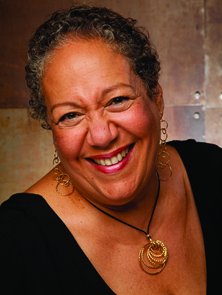 {jcomments off}Regina Jones grew up quickly. At the age of 10, she recalls spending time in the South L.A. beauty parlor where her mother worked.
{jcomments off}Regina Jones grew up quickly. At the age of 10, she recalls spending time in the South L.A. beauty parlor where her mother worked. Good customer service was a given there and eventually, Jones figured out that if she picked up clients’ lunches, her tips would add up to a decent personal budget. She also kept an eye on the family bills. Whenever a notice came from the Department of Water and Power, for example, she’d gather the funds from her parents, get a cashier’s check at the post office and put the payment in the mail.
At 15 years old, Regina married Ken Jones and began a family, raising five children, all about a year and a half apart. Her financial skills proved valuable immediately. While Ken made a living as a reporter and journalist, Jones was in charge of using those earnings to take care of the family’s fiscal matters.
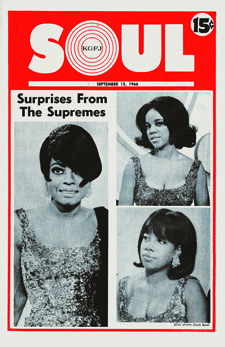 In 1966, the couple launched Soul, a publication dedicated to telling the stories of black entertainers of the 1960s, 1970s and early 1980s. It was the first magazine of its kind. Ebony and Jet existed, but the main focus wasn't entertainment, and when entertainers were featured, they were generally artists who had successfully crossed over into the white commercial market, such as Sammy Davis Jr., Lena Horne and Nat King Cole
In 1966, the couple launched Soul, a publication dedicated to telling the stories of black entertainers of the 1960s, 1970s and early 1980s. It was the first magazine of its kind. Ebony and Jet existed, but the main focus wasn't entertainment, and when entertainers were featured, they were generally artists who had successfully crossed over into the white commercial market, such as Sammy Davis Jr., Lena Horne and Nat King ColeRegina and Ken moved to Van Ness Avenue in Country Club Park in the same year the paper started. Regina still resides there. When the newspaper folded in 1982, Jones’ professional life continued. She spoke with TNN about Soul, her life in Los Angeles and her entrepreneurial nature.
TNN: Soul launched in April of 1966 and covered some of the biggest names in music history, James Brown and Aretha Franklin among them. What was it like to work with such icons?
Regina: I was really all about the nuts and the bolts. I went to the concerts, met the artists, and I enjoyed that. But that was all background for my constant thought: How will I get advertising in to pay for the publication, to pay the bills at home and to take care of the children? My motive was never “Go have fun.” It was a business. I was never a fan of an artist.
TNN: What gave your husband the idea to start Soul in the first place?
RJ: Soul was born out of the Watts riots. At that time, Ken was a runner for NBC news’ Huntley-Brinkley Report and on local radio stations; I was a radio operator for LAPD, and I got the first call for help that night. My husband watched Watts burn from the roof of a radio station. That’s when he thought, “Let’s do something better.” He came up with the idea for the newspaper.
TNN: Tell us about working side by side to create the newspaper for all those years.
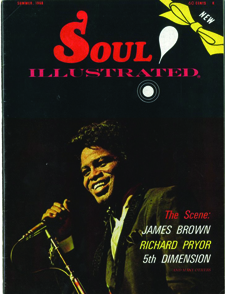 RJ: It was a small investment of money — we just had to pay the printer, so then if the issues sold, that money went to pay the printer next time. If you got an ad, you made more than it cost to print the issue. I was responsible for the books — advertising, sales, distribution, deadlines. I never got into the art side of things. That made my husband and I a good combination. He was the creative one. He would do anything to be on the radio or on television. He loved the music, the parties — if I was at a party, I was there to get an advertiser.
RJ: It was a small investment of money — we just had to pay the printer, so then if the issues sold, that money went to pay the printer next time. If you got an ad, you made more than it cost to print the issue. I was responsible for the books — advertising, sales, distribution, deadlines. I never got into the art side of things. That made my husband and I a good combination. He was the creative one. He would do anything to be on the radio or on television. He loved the music, the parties — if I was at a party, I was there to get an advertiser.TNN: Soul was associated with local radio station KGFJ. Later, it spread to Oakland then different cities across the country.
RJ: The instant success in Los Angeles made it clear we were filling a need and in less than one year we were being distributed in the top 30 markets across the country. At our peak we were publishing 127,000 copies. Ken came up with a unique marketing plan to affiliate with the top R&B radio stations in each city. By trading advertising space in the magazine and using their station's name on the cover, the radio stations gave us free advertising on air. Because of Soul, I received the NAACP Image Award for Outstanding Woman In Business in 1980.
TNN: What were some of the accomplishments of soul that you are most proud of.
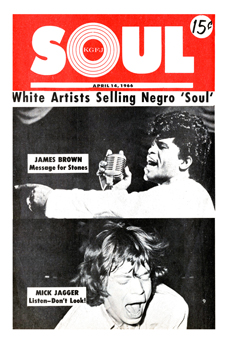 RJ: By documenting the history of black entertainment just before it crossed over into white mainstream we recognized and covered important artists early in their careers like Melvin Van Peebles, Bill Cosby, Flip Wilson, Cicely Tyson and Artist Lane whose bronze sculptor of Sojourner Truth was placed in the Capital Building in Washington DC. We were also a townhall for opinion pieces that reflected the political changes for African Americans in the 60's and 70's. The headline for our first cover was "White Artists Selling Negro Souls". You can find out more by going to our Facebook Page "Soul Newspaper".
RJ: By documenting the history of black entertainment just before it crossed over into white mainstream we recognized and covered important artists early in their careers like Melvin Van Peebles, Bill Cosby, Flip Wilson, Cicely Tyson and Artist Lane whose bronze sculptor of Sojourner Truth was placed in the Capital Building in Washington DC. We were also a townhall for opinion pieces that reflected the political changes for African Americans in the 60's and 70's. The headline for our first cover was "White Artists Selling Negro Souls". You can find out more by going to our Facebook Page "Soul Newspaper".TNN: What led you to close the publication in 1982?
RJ: My mother had become very ill, my marriage was falling apart, and Soul was in big trouble. There was an economic downturn and everyone was holding their pockets tight — it was a battle to pay the printer and pay staff. I knew I couldn’t work magic any longer. But it did feel like pulling the plug on one of my own children when we printed that last issue. I had emotionally reached a point where I didn’t care or know what others thought. I know many were disappointed.
TNN: What was your next move?
RJ: I stuck my head in the sand and tried to survive. I had teenage kids at home, so I did what I could do to not lose it. I started doing temp work, until a friend of mine at the Ladd Company reached out to me. She wanted me to work on the first “Police Academy” film as the assistant to Alan Ladd, Jr. I knew about deadlines and production. It was the same — my experience carried over. Later, [music producer] Dick Griffey asked me to do publicity for him. I was shocked, and I told him I didn’t know how to do that. He said he was willing to pay me for 6 months to prove that I did. I had five kids, so I took that job as the VP of publicity until he had to make cutbacks. That’s when I started my own firm: Regina Jones and Associates.
TNN: What sort of projects did you lead with your own firm?
RJ: My first really good account was The Geffen Company.As the firm grew, we started doing the NAACP Image Awards. I did 13 shows — at the Wiltern, then the Pasadena Civic Auditorium. It became a huge televised show, and my life was very high stress three to four months out of the year. Then Maxine Waters called me about a project she thought I was perfect for — a childcare development agency had opened a childcare center in Nickerson Gardens housing project, which was right across the street from my mother’s beauty shop and where I’d played as a child. I said I would do it, and later the ladies asked me to join their firm — Crystal Stairs, Inc. I kept my own PR work going on the side for awhile, but eventually I gave that side work up and focused just on Crystal Stairs. I liked working for non profit. After all those years in the entertainment world, it was nice to give back.
TNN: You’re officially retired now yet still busy. What are you up to?
RJ: I took on the role of Interim President of the Country Club Park Neighborhood Association (CCPNA) recently. I’ve been involved with the group for over 10 years, and I’ve discovered that my neighbors are also my friends. That’s a nice feeling… it’s a feeling of community and connection. We have an important thing in common — our homes. And that’s usually a person’s most valuable asset, and there should be community surrounding where you live. If there were to be a disaster, it’s not your family or friends who’ll be able to come to you. It’s your neighbors.
Learn more about Soul Newspaper on facebook, or visit the archives in their entirety at UCLA’s Charles E. Young Research Library.
The Nicholas Brothers Remembered
- Details
- Category: Interviews
- Published on Sunday, 11 October 2015 00:36
- Written by Chelsee Lowe
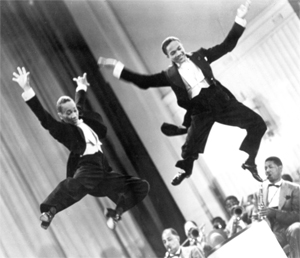 Fayard and Harold Nicholas made a name for themselves with their feet. From the ages of 14 and 7, the brothers impressed crowds worldwide with their electric tap dancing skills. Though they passed in 2006 and 2000 respectively, the Nicholas Brothers’ legacy lives on through their children, grandchildren and great grandchildren, including Tony Nicholas, director of Tom Bradley International Source Center on Pico Boulevard. Tony, son of Fayard Nicholas, hopes to stage a Nicholas Brothers tribute show at a local theater soon. He spoke with The Neighborhood News about his father’s life in Los Angeles and beyond.
Fayard and Harold Nicholas made a name for themselves with their feet. From the ages of 14 and 7, the brothers impressed crowds worldwide with their electric tap dancing skills. Though they passed in 2006 and 2000 respectively, the Nicholas Brothers’ legacy lives on through their children, grandchildren and great grandchildren, including Tony Nicholas, director of Tom Bradley International Source Center on Pico Boulevard. Tony, son of Fayard Nicholas, hopes to stage a Nicholas Brothers tribute show at a local theater soon. He spoke with The Neighborhood News about his father’s life in Los Angeles and beyond.TNN: What will the upcoming tribute show be like?
Tony Nicholas: What we’ve done is taken Nicholas Brothers moments — pictures, film clips of dance routines, plus two reenactments — and combined them into an amazing show. It begins with family members on stage. The MC usually asks us a series of questions and we tell stories. After that, my two grandchildren come out. A clip from the film “Lucky Numbers” plays behind them, and they sing the song with the clip. After that, my daughters come on stage to do the “Lucky Numbers” tap routine. It’s incredible.
TNN: You’ve shared that four generations of your family have tap danced at this point. How did that tradition begin?
Tony: My father was born in 1914 in Mobile, Ala., and my uncle was born seven years in later in Winston-Salem, N.C. My grandparents later moved to Philadelphia — they were in Vaudeville, and they performed the Vaudeville circuit along the east coast. My grandmother played the piano, my grandfather played the drums, and they had a base player in their group. My father would travel with them as well. He’d be in the audience, watch the dancers and mimic them. He taught himself how to dance, and later he taught his brother.
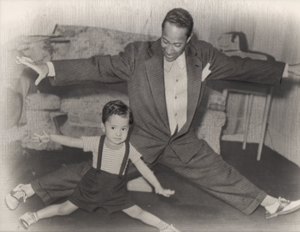 Tony with Dad Fayard
Tony with Dad FayardTNN: How did they become professional dancers?
Tony: One day, my father and uncle performed for their parents. And in regular church shoes, because tap shoes weren’t a thing yet. My grandfather knew there was something there. My grandparents quit Vaudeville and started promoting their kids. My father was 14 and my uncle was 7.
They started at the famous Standard Theater in Philly. A promotor saw them dance and said, “Listen, I wanna bring you to New York City to perform at the Cotton Club.” And they did. They were there with all the famous black entertainers of that time — Lena Horne, Count Basie, Duke Ellington and more. The Nicholas Brothers were so talented that none of the other acts wanted to follow them. So they had to close the show every night. They did that for years. Then Hollywood called.
TNN: What happened when they came to L.A.?
Tony: They just visited at first — they shot the film “Kid Millions” — then they went back to The Cotton Club. But when the venue closed down in 1940, they went to Europe to find work — black performers were well-loved in Europe, so there were more jobs there than in the U.S. When World War II started, they returned to the states. My father was drafted and he became a part of the United Service Organization. He performed for the soldiers.
TNN: What happened when the war ended?
Tony: When my father got out of the army, he and my uncle signed a contract with 20th Century Fox to do six films. They lived here in L.A. at that point, and by then my father had married my mother, who he met while performing in Chicago. She wanted to buy a house on the westside of L.A. but she wasn’t allowed to. At that time, blacks couldn’t buy homes west of Arlington. She tried to buy a house right on Arlington, but when nothing was available she went one street over. We lived on Van Ness, a couple of blocks north of Exposition.
(One block over, was Cimmaron where Eddie Anderson, the African American actor who played Jack Benny's butler Rochester, built a house that was the exact replica of Jack Benny's. He was not allowed to buy in Beverly Hills.) Our family bought the house in 1945, around the time I was born. Mom started picketing City Hall around then as well. There was a photo of her, myself in a buggy and a sign that reads, “L.A. is Unfair to Negros” in the L.A. Times.
With Bob Hope
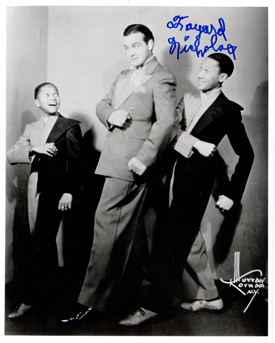
TNN: How did the filming of the movies go for The Nicholas Brothers?
Tony: They shot the films from 1945 to 1951. But one of my favorite stories is from the signing day. They went to see Darryl F. Zanuck, head of 20th century Fox and one of the most powerful men in all of Hollywood. Zanuck said he wanted to find another star on the grounds — he wanted someone to take a photo with my father and uncle as they signed the contract. So he told them to go have lunch. They went to the commissary and were turned away by the maitre d’, who told them they had to go around back and get sandwiches. An executive saw what happened, told Zanuck, and Zanuck came down and fired everyone. That same day — that quick — he got new workers, found my father and uncle and had lunch with them in the commissary. He also found Fred Astaire. So Fayard and Harold danced with Fred Astaire right there on the lot, and my uncle’s valet recorded it on his video camera.
TNN: Many other incredible stories unfolded for them — and you — as they continued to dance. Can you share another of your favorites?
Tony: After the contract film wrapped, we headed back to Europe. At one point, we were staying at a villa in Rome. I was dancing by then, too. I was 5 years old. One day, a priest came up to us, talked to my mother, and we got in a limo that took us to the Vatican. We were ushered in to see the Pope, and I danced for him. I had been performing with the Nicholas Brothers, and he had heard wind of this little dancer. He wanted to see me for himself. We have it all on film, too. And he gave me a special blessing — that’s why I feel I’ve been blessed all my life.
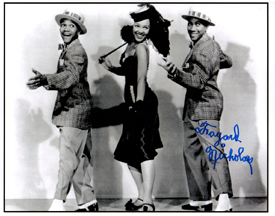 With Dorothy Dandridge
With Dorothy DandridgeTNN:Were there any other one-of-a-kind performances?
Tony: Not too long after that, we moved to Paris then London, where we gave a command performance for Queen Elizabeth. She was in the royal box and pregnant. She went into labor and had to leave, but the Queen Mother stayed — she wouldn’t leave until she’d seen us. After The Nicholas Brothers performed, I had my turn. The next day, the Queen Mother invited us to Buckingham Palace — we have a film of her holding my hand and walking through the rose garden. I’ve been waiting to meet that child — Prince Charles — to tell him that his grandmother wasn’t at his birth because she wanted to see me dance. And all of these home movies are stored at the Motion Picture Academy here in L.A. You can go watch them! They’re also part of the National Library of Congress.
TNN: What did your father's dancing career look like in his later years?
Tony: My mother and father had problems, and eventually she divorced him and we came back to the house on Van Ness. Tap dancing fell in popularity in the 50s and 60s — my father took work as a night watchman at a L.A. factory. But then in the 1970s, tap dancing came back, with a little help from Gregory Hines and Sauvignon Glover. People rediscovered The Nicholas Brothers. My uncle came back from Europe, where he’d stayed and performed solo. They started working in television, at the Hollywood Palace, everywhere. They performed before seven presidents; they received a Kennedy Center Award in the 1990s. Eventually, my own daughters were dancing, too. As a family, they danced together at Carnegie Hall, at the Hollywood Palladium, even in Cuba.
TNN: What a legacy. What about the fourth generation?
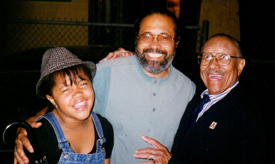 Tony: I have two grandchildren now, and they’re dancing— they’re good and they love it. My granddaughter was here [at the Tom Bradley International Source Center] the other day. Someone asked her, “What do you want to be?” She said, “A doctor, but I want to be a dancing doctor.”
Tony: I have two grandchildren now, and they’re dancing— they’re good and they love it. My granddaughter was here [at the Tom Bradley International Source Center] the other day. Someone asked her, “What do you want to be?” She said, “A doctor, but I want to be a dancing doctor.”Watch one of the most famous Nicholas Brothers' performances at
www.youtube.com/watch?v=zBb9hTyLjfM
Interview with the Amazing Grandmaster Ari Moon
- Details
- Category: Interviews
- Published on Thursday, 10 April 2014 15:09
- Written by D.V. Lawrence
If you take Crenshaw frequently you will have noticed Moorimgoong Martial Arts, a Korean martial arts school housed in the bright orange building between Crenshaw and Olympic. The large floor-to-ceiling picture windows allow you to watch students young, old and in between practicing their moves. The school was started in 1968 by Great Grandmaster Yong Moon, (a highly respected teacher in the world of Kung Fu)and has provided our community with a path of health, ethical development and really cool Kung Fu moves! I first met the energetic and cheerful Grandmaster Ari Moon, Great Grandmaster Moon's wife, at a community meeting. We connected easily and quickly and the next thing I knew I was taking Kung Fu classes. The school has numerous awards displayed on the walls including several Presidential Fitness Awards from George Bush, Obama and Bill Clinton, the Presidential Call to Service award, awards from the Marine Corps and numerous awards from the California assembly and Senate along wth mayoral and city council awards. Pictures of Grandmaster Ari Moon performing beautifully executed moves at various stages of her life are also displayed throughout the school. I decided an interview with her would be interesting to our readers because of the amazing work the school does with children in our community. Besides offering training for children of all ages, they provide an after school tutoring program, summer camps and community service activities.
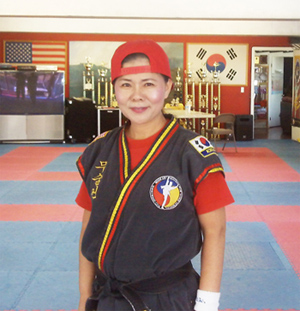
The Neighborhood News: How long have you been in our community?
Grandmaster Moon: We've been in this area 23 years and in this location 14 years.
TNN: How long have you been practicing martial arts?
GM: About 45 years. I started when I was 7 years old. My parents understood it would give me a good foundation for discipline, respect and concentration.
TNN: What is the most extraordinary thing all of this practice has given you?
GM:This has saved my life twice. Not meaning that somebody tried to kill me, that's not my lifestyle. I was in a very big car accident on bike. I have a very heavy damage too, and most people they don't survive. They die. But my body is more flexible than other people because of the training, so my body knows how, in the emergency, to defend itself. Your body responds quickly. You don't have to think about it, positive reaction naturally comes out. If you know Kung Fu, you can drive better, you can cook better, you can work better.
TNN: You have a very strong program for children.
GM: When young children start Kung Fu, they face beautiful growth and the development of their EQ, [emotional quotient] IQ [intelligence] both. Concentration increases, also focus increases. Also you have positive attitudes. We teaching all of those and responsibility. All of these exercises were created by Great Grandmaster Yong Moon, who has a chiropractic background, so he knows what is the best exercises for the bodies of young children to the older senior.
TNN: Talk about how this practice extends into the home and school of your young students.
GM: We have student home rules. In order to get their belts they have to pass the home rules report card that parents and teachers grade. What you learning here, you have to take it home, you have to take it to school, you have to take it to work. You learn to follow directions. Not only in the Moorimgoong school but we work together, teacher in the school and the parents in the home. That's why we have the ten commandments here, ten student home rules: Students show respect to Mom and Dad, and Family Members. Student maintain a good relationships with Siblings and Friends. Students help with household chores and keep rooms clean. Student keeps body, hair, teeth, and nails clean at all times. Student maintains a positive and a pleasing personality.
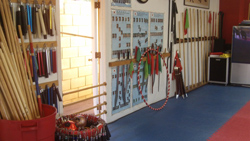
Student gets started and finishes tasks on time. Student is truthful at all times. For Teacher's approval: Student shows respect for teachers and follows instructions. Student studies school work at school and finishes homework at home. Student balances work with play and manages time effectively.
The home and the dojo, (Moorimgoong school) and school, they have to be triangle. That's what I call the body, mind and spirit.
TNN:Beautiful. What do you see with the kids when you do this?
GM: First time that they come in, they don't know how to follow directions. We teaching, they getting the better grade. If they fail classes, they catch up to C, they catch up to B, they catch up to A, so they coming to A class of student. So there's not only things to know how to do physically here, but mentally too. Also, we are saving the parents and government money.
TNN: Because you're not going to the doctors all the time?
GM: That's right. You spend a little tiny bit of money right here right now, but you're gaining so much.
TNN: Explain the different belt grades.
GM: First of all, you start in the white belt. Number one; between the masters and the students we teach Respect. Then - Good character, Healthy and Fitness - then the Martial Art called the Kung Fu, Self-Defensive skill. A lot of people think self-defense is used when somebody have to be attacking and punching and kicking, that's not true. Somebody might be attacking in their speech. You say, “okay, stop yelling at me. Communication better”. That is defending yourself. You play ball and if you know how to do Kung Fu, you don't get hit. Your reflexes are better. White belt test is after around two months, two to three classes a week.
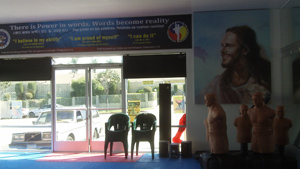
Then next step is the yellow belt. We call this the Responsibility belt. We're teaching responsibility and to respect the parents and you have to get good grades. Kung Fu kids in Yellow belt don't have any issue, any problem in the grade. They improve. Also, Helping Out, they're helping household. They can’t leave a mess, put socks here, put stuff there, no. Keep neat and also help to do household chores.
TNN: And these kids do it?
GM: Of course!
TNN:The parents must love you.
GM: Oh yes, yes ma'am. The kids are learning serious principles.Then, next step is Orange belt. Self-Confidence. When they know white belt and yellow belt and develop a learning skill...so then comes in Self-confidence. We focus on “Believing, in ones abilities.” “Success in all endeavors.” “Truth to self and others” and “Confident yet humble.”
TNN:Beautiful.
GM:Then next level is Green Belt. Green belt is “Self-discipline.” Self-control. Focus and Concentration. Be Proactive. Perseverance. Learn Teamwork. Finish what you start.
Then Blue Belt. Positive Attitude. Good Manners. Enthusiasm For Life. Pleasing personality. Positive thinker. Trustworthy.
Red Belt is Courage. Conquer fear. Strong will. Learn from your mistakes. Live to the Fullest.
In the red and black belt, is balance. Balance mind, body and spirit. Help create a strong foundation. Be a Leader. Cultivate Well Being. Strive for Self-Mastery.
Once you have white through to red and black, then you are prepared for black belt. Be responsible, Self-confident, Self-disciplined, Positive attitude, Courageous, Balanced, Appreciative. This is not going to be changed in one day, and you have to stay focused. Six into 18 months through to three year in a group. With private lessons and depending on their abilities can be less than a year. After you've become a black belt, you don't have problems with your lifestyle because you have education due to Kung Fu.
TNN:What does the word Kung Fu actually mean?
GM:Kung Fu means study. Study of mind, study of physical, study of spirit. A lot of time people think it's just fighting. That's not true. Kung Fu means “study of”... if you play piano, you do art, that is a Kung Fu.
TNN:So it's like a practice.
GM:That's right, practice.
TNN: It means to transform oneself to become whole and functional and for ones talents to come out. You were talking about that earlier; everybody has different talents. So this practice allows the individual to begin to be in touch with their talents.
GM:That's right.
TNN:And have the discipline to bring their talents out, whatever they are.
GM:That's right.
TNN:How long have you been teaching kids?
GM:23 years.
TNN:As they get older, do they stay with the practice?
GM:I have a third generation here. Great Grandmaster has been teaching since 1968. Then come in father and then son and now grandson. Mama has a black belt, she has daughter and then she come in black belt. I have a lot of parents like that.
TNN:What about the seniors?
GM:Yes, we have a lot of seniors also.
TNN:What happens with the seniors? They come in, they're achy, they're older, why are they coming?
GM:A lot of times somebody introduce them to our school. We also do a lot of demonstrations for seniors and at their centers. Sometimes they're having the pain, so we show them the pain relief. The pain really leaves; it’s gone. If you do Moorimgoong Kung Fu, you develop natural beauty. You don't have to have plastic surgery. Your body, as you’re getting older, you don’t have to be stooped over. They end up with strength, flexibility and energy and happier.
TNN:Well I know when I started, my back had been sore for two weeks. I had to move carefully so that I didn't throw it out. I was getting ready to go to the doctors to get an x-ray to find out what was going on back there. Then I came for my first class here and when I left, it was gone and it hasn't come back yet.
GM: That is the healing. A lot of people have arthritis, cholesterol, diabetes. High blood pressure. Moorimgoong Kung Fu helps to heal this. Dianne you stay one year and you will be ten years younger, one year from now.
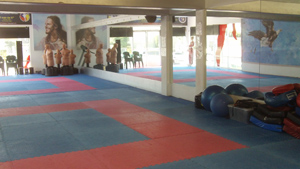
TNN:(laughs)
GM: That's right. Everybody. Also I have some students who have cancer recovered too. I have people where the doctor say they have 3 months but they live 12 years.
TNN:You also do a lot of community-oriented activities.
GM:Yes.
TNN:What kind of things do you do in the community?
GM:I've been here 23 years. It used to be very insecure unclean place. A lot of bad kids here, selling drugs. But wherever our school goes things change, we are proactive. Every Saturday, our kids go out and clean our neighborhoods. Pick up trash. Look at our school and the neighborhood here, it's safe and clean.Also we're teaching our students, every morning go out of your home, sweep and pick up trash. If you do, everybody do and then all our community is so clean, so bright.
TNN:Moo Sool Wan has such positive energy and you always end your classes with a group cheer. “I'm happy, we're happy, everybody's happy.” You call this the happy virus.
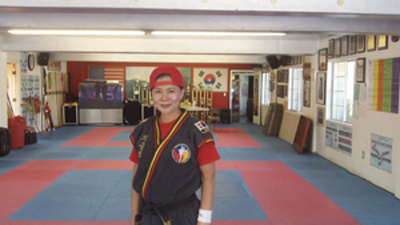
GM:That's right, happy virus. Why? Because I went through hardship, too. So many times hardship. I’m a Christian. Many times when I came into hardship, I say, look at the outside, it's beautiful, isn't it, Dianne? We have a bird; you go to the beach and see the fish. They're not worried about the money; they don't worry about sickness; they don't worry about fighting. Only human being have to be suffering. Why? Because they don't see themselves. That's why, I look at myself, I say if I'm happy, I see my husband happy, my two son happy, my students happy. Then one day I be meditating and then I pray and see everything coming from me. Sadness, happiness….it's up to you. You want to be healthy lifestyle? It's up to you. You want to be rich style? It's up to you. That is everything depends from me. You have white lens in your eyes, what do you see? You see white; you don't see the black. You wear the red one; you see red. You see yellow. Whatever cover your eyes, that what you see. So I said, okay, happy. Happy! Smile! Smile is a power!
The World Martial Arts Federation Moorimgoong 1149 Crenshaw Blvd, Los Angeles, CA 90019 To find out about After School Program (Pick up, tutoring, martial arts, snacks) call 323-857-1234
Too see the students in action, CLICK HERE.
-Instagram username: @moorimgoong
-Facebook: Moorimgoong Martial Arts
-Yelp: MoorimgoongYelp
Photos by D.V. Lawrence
5th Anniversary Interview with Editor/Publisher Dianne V. Lawrence
- Details
- Category: Interviews
- Published on Friday, 02 August 2013 16:45
- Written by Chelsee Lowe
On the 5th Anniversary of the inaugural publication of The Neighborhood News we thought an interview with the publisher/editor might be in order. Dianne printed 1,500 copies her first issue and today publishes 13,000 - 14,000 every two months. How did she get started and what does it take to keep it going?
CHELSEE: Tell us how you feel about surviving five years in print and news, because that’s no easy task.
DIANNE It's been a struggle as any new business is, and I’m just blown away that we are where we are today. The majority of small businesses are started by women, and unfortunately the majority of these fail within the first five years. I think I was just in the right place at the right time with the right idea, the right skill set and the right attitude.
CHELSEE: What inspired you to create TNN?
DIANNE : About seven or eight years ago, I was an associate
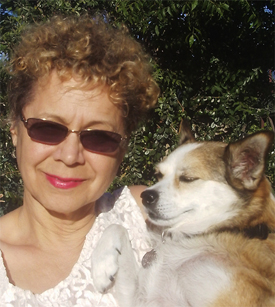 editor at a magazine that Jay Levin, (who started the L.A. Weekly) created called Real Talk L.A. It was a pretty big project, but we were only able to produce one issue. As you said, print is difficult. Suddenly, I was without work and headed toward my '60s and didn’t want to be 65 looking for a job, so I needed to create my own source of income.
editor at a magazine that Jay Levin, (who started the L.A. Weekly) created called Real Talk L.A. It was a pretty big project, but we were only able to produce one issue. As you said, print is difficult. Suddenly, I was without work and headed toward my '60s and didn’t want to be 65 looking for a job, so I needed to create my own source of income. About six years ago, I was involved in a neighborhood dispute and I discovered that city agencies were violating their own regulations at the request of a councilperson. When I asked the agencies how they could go against state and city required procedures and regulations, they said, “Well, we do it all the time. If council people want us to do this, we do it.” I asked, “But how do you get away with that?” One city worker said, “Well, you know, people don’t have the money to sue us.” I was just, people call me naïve, but I was flabbergasted that this was acceptable. The thing that disturbed me most was the power it gave to an elected official. The power to circumvent the system and make decisions to help some and not others based on the councilpersons own personal motives or inclinations. Right. I'm naive...but they say all politics are local. How can you complain when it happens on the national stage but not complain when the same thing is happening in your own backyard?
Then one morning, it was as if Jupiter threw a lightning bolt in my head. I thought, “This community needs a magazine, and we need to start talking to each other about what’s going on, what’s happening in our community.” I also discovered that politicians often work under the premise of “Vote for me, go back to TV and let me be.” What about a publication that focuses on our community issues? Kept an eye on things? Shared info? I'm a bit of an activist. I got a law changed in L.A. making it illegal to tie dogs up in the backyard. I fought against "Operation Rescue" when they tried to shut down Los Angeles abortion clinics. So when I get a call to action...I go with it.
I thought, okay... I have to sell ads. So I created a mock-up, went out and immediately began selling ads, and that’s when I knew this was a good idea. I started with 1,500 copies my first issue and now five years later, we’re up to 13,000 to 14,000 copies every two months, distributed on doorsteps and at community sites. This August issue went from 28 to 32 pages for the first time. I started out with the local kids distributing it, but now we have a professional distributor.
CHELSEE: What other kind of work were you doing prior? Were you doing a lot of journalism?
DIANNE I'd done some work as a journalist but I didn't have any professional training, just a natural instinct and talent for it.
As a teenager I wanted to perform and act, which I did for a long time. When I hit 30, I realized I didn’t want to grow old as an actress…not a good plan. I had begun painting and focused my attention on that and was a painter for about 25, 30 years. I had some shows. I sold work. I was an art instructor and taught at Esalen and MOCA - the Museum of Contemporary Art, and at Art Center in Pasadena. I also taught incarcerated people at places like California Institute for Men and California Institute for Women. I did an album cover for Leonard Cohen's "Recent Songs." But it is a very difficult profession to succeed financially in.
I found that when I wrote a lot of people responded.

I have also done many other things. I sing and had bands. Bertha D. Blues and The Lost Boys of Jazz and then Storm Taylor and Her Ex-Husbands. We do early African-American music and I've sung around town. Even opened for a jazz act at the Troubador. I still sing at Pips on La Brea now and then. I've trained dogs, worked as a salesperson. I put in three years as a salesperson selling an emergency button for seniors over the phone. If I had not done that job, The Neighborhood News wouldn’t exist today. It taught me how to make a sale.
One day, in my 40s, a good friend asked me, “If you could make money doing anything you wanted to do, what would it be?” Something in my brain said, Write! They said, ”Then get a job as a writer.” So I went on Craig’s List and found an opportunity to write film reviews. I wrote free film reviews for three years for Filmmonthly.com .
I once wrote a short story that I submitted to the L.A. Weekly, and they published it. Let's Get Lost They told me they rarely published unsolicited work. So it became clear that I had a writing talent.
CHELSEE: Tell us about some of the obstacles you’ve come up against in these five years with the paper and what you think others can learn from your history?
DIANNE: To open a new small business you have to have fortitude, confidence in your vision, a courage that borders on delusion and an ability to take it one day at a time.When I asked a friend, who had a succesful business, for advice, he looked me in the eye and said "Failure is not an option". That was my mantra. It helped.
Obviously, there are the financial obstacles. You are supposed to start with some capital and I had none. I started with $0 and a dedicated refusal to debt. Despite my talent for ad sales, there were times when there just wasn’t enough money for the magazine. That's when most small businesses go for loans or under. But because debting or failure wasn’t an option, some of my supporters encouraged me to ask for contributions...which I was reluctant to do. I didn't want the appearance of failing. They said, “Are you crazy? This is a valuable free service that you are giving to your community. You are putting this on their doorsteps every two months….You can ask for donations!” I was like, "Yes, that’s true," so I did. It takes a village to create a community news source. People in the community contributed, and some of my wealthy friends contributed. I sold some art. I also have advertisers that have been very loyal to me and support what I'm doing. I'm also very organized with my finances and records, a key to growth. But finances were a big obstacle as they are for any new small business. With help from my second job I'm starting to see improvement with the numbers.
The other obstacle was push back from people in the community who may not have liked what I was writing about. I remember a woman in a local community group who voted against taking out an ad with us because she didn’t approve of one of our advertisers. I think there was some envy involved here and there, something women who are succeeding deal with more than men. There are also a lot of women who do community work and "control" territories and may not have been happy with me sticking my nose in. And sometimes people just didn't like me. As you can imagine, I can be pushy. People have always either really liked me....or not, so I'm used to it. But I'm a people person and have connected with some wonderful people in the community who supported and valued what I was doing and their support kept my spirits up. There are several people that I reach out to consistently for feedback. I have people, like my associate editor Renee Montgomery, who reads what I write before I send it out to make sure that it has the right tone and right attitude. Laura Meyers who edits the WAHA newsletter and is an experienced journalist, has been a valuable and helpful resource. Community activists like Gavin Glynn and Jo Schaeffer, Scott McNeely, Lora Davis, John Jake and others who have kept me informed and connected to community issues. So it is strengthening if you approach the obstacles with the right attitude, stay connected to the community in many different ways and stay willing to learn. Strangely, I also never felt like “I” was creating this. I felt that I was given a responsibility and opportunity, and my job was to be of service to this good idea and be willing to continue learning and facilitating the dissemination of pertinent community information. As long as I keep this idea front and center, the magazine seems to find what it needs.
CHELSEE: What about competitors?
DIANNE: Another obstacle was the entry into the community of a competitor, which made me very nervous at first because I perceived them as having more money and more experience. They had a successful paper in another community. But when their paper came out, I saw the content wasn’t competitive. They had just moved into the neighborhood and were shooting in the dark regarding content. They weren’t connected to the community the way I was, having lived in CD10 and within my borders for 30 years. So that didn’t disturb me, but what did disturb me was the possibility that they would go after my advertisers, which they tried to do. This is a small business community, so there weren’t enough advertisers for two papers. But apparently, my advertisers were pretty loyal, and the competition went out of business within the year. That too was an important lesson. It’s important to have competitors. It strengthened my resolve and willingness to double down. “I’m going to put one foot in front of the other. I’m going to stop worrying about them and keep my eyes on the prize. Failure is not an option.” I also did learn some things from the way they did things. So all the obstacles are really opportunities to strengthen one’s spirit and one's game. It sounds like a cliche, but it's true.
There will continue to be bumps along the road; that's the nature of business. But you know, this thing has a spirit of its own. If I face an obstacle, things seem to just show up to help me get through it. I imagine what I need and if it's accurate, eventually it shows up. I needed a website, and Scott McNeely who was then president of Pico Neighborhood Council created one for me for free, sat me down and showed me how to work it. And suddenly, I had a website, which has been recently upgraded and looks amazing. People have stepped up and been extremely generous and helpful.

CHELSEE: Those are obviously obstacles that have become triumphs. Are there any other triumphs that you feel are notable and memorable that you’d like to share?
DIANNE: When we had the booth at CicLAvia, so many people came up and said, “Oh my God, I love this magazine. I read it cover to cover. I really like that you are writing about this and I really like your articles about that.” Every time I hear somebody say that, I realize that this has become part of the fabric of our community, and that is a total triumph.
The fact that I have you women working with me is an absolute triumph. It’s like a small miracle that each of you came to this magazine with a particular angle the magazine needed and said, “Let me help.” And the fact that people in the community contribute stories and ideas. I get emails telling me about things that we should be aware of. I recently got an email from a young man in Harvard Heights, 17-year-old Joshua Morgan, saying that his school told him to commit 20 hours of service in the community. And he went on to list a number of reasons why he values and appreciates The Neighborhood News, including the fact that his grandma reads it cover to cover. The spirit of the magazine, which is connecting people to information in the community and connecting people to each other, is alive and well; the intent of the magazine is working.
The fact that the advertising continues to increase…. In the last three issues, we’ve had the best sales ever, so that to me is a very good sign. We went to 32 pages for the first time this issue. Sales always go up and down, but the ups are higher. At one point I was having real difficulty and prayed for a sign to continue and asked that it appear within two days. That very day I received two ads that totalled the amount of money I needed. One literally came to my doorstep. So I knew I needed to continue. But this poor little magazine had to support my whole financial nut, and it said to me, “You know, okay, I’m working hard here but can you give me some relief?!” So I said, “Okay, I’ll get a second job.” And miracle of miracles, my associate editor Renee called about a job she'd seen and within a week I got a job dog training at a national pet store chain! I've been a longtime activist for dogs. I got a law changed making it illegal to tie them up in the backyard and have rescued, cleaned up and re-homed over 75 dogs over the years. I've been training for years. So I’m doing a service that I absolutely love, working with puppies and dogs and making them and their owners get along better. And it fits perfectly with my publishing schedule. So after much struggle, things are going well today. Can't complain.
CHELSEE: What do you love in particular about being in this community? I know you said you’ve been here 30 years, but what makes you love it?
DIANNE: (laughs) The Santa Monica Freeway! When I first moved into this community in 1979 and discovered I was so close to the Santa Monica Freeway, I was like, “Wow! If there is no traffic, I’m 15, 20 minutes from the beach. I’m 15 minutes from downtown. I can take it and zip out to the desert. I love the Santa Monica Freeway!" It’s no surprise to me that I live right across the street from it and next to one of its overpasses.
I love living in such a diverse cultural and economic community. We have everybody! African-American, Asian, Hispanic, white, gay, straight, rich, poor. Also, this is an historic area and I've always loved living in older buildings. The place I live in was built in 1918 and I have a fireplace that works and a fig tree in the yard! Plus the history of this area is off the charts. West Adams Heritage Association (WAHA) does a remarkable job of preserving and celebrating this history. And of course I love the people that live here. I've been walking my dogs for 25 years, and it's the best way to get to know everyone. I love the sense of community and neighborliness that I see all over this area.
CHELSEE: Share one or two of your favorite memories from working in the area with the magazine. I’m sure there are more than one or two.
DIANNE: (Thinking for a moment) Well I was really glad when my competition went out of business (laughs). I would say that anytime I triumphed over an obstacle, and sometimes it just took patience to watch an obstacle dissolve, is a favorite memory.
What I really love is getting in my car driving around the community and visiting my advertisers or talking to people in the community at events or meetings. Going to Pinky Rose or Darren's or Inri's Blu Elefant cafe or Cordially Invited, Desley's Dog Grooming, or Papa Christo's to hang out. Getting my hair done at Indulgent Concept and listening to some of the stylists suddenly break out into song. I have really grown to have utter respect for the small business owner who can hang in there.
I’ve always been a people person. I love going to the Wellington Square Farmers Market every Sunday, running into local people and talking to them and gossiping about what’s going on in the community. Connecting to the community through TNN and being able to contribute this way has been enormously satisfying for me. The fact that this is happening today in my life is a big moment for celebration.
CHELSEE: TNN has also organized community events.
DIANNE: Right! A major one was when there was an election in CD 10 for a councilperson. Nobody even knew the election was coming up, and nobody knew that there were five people running against the incumbent Councilman Herb Wesson - a Hispanic, Korean and three African-Americans, so I decided to hold a candidate’s forum. All the candidates participated including Councilman Wesson, who wasn’t going to show up but then ran in at the last second. Eighty attendees showed up from the community. Damien Goodman was the moderator and we had a community panel scoring the answers. The candidate who scored the highest marks got the least amount of votes in the election. None of them had money to run a campaign.
We did a local talent show for the community. That is where Joshua Morgan first met us. He was performing with Grandmaster Goode’s Karate school.
We did a big Pico shopping district event to try to bring more attention to Pico retailers. I have spent a lot of space trying to shine a light on the Pico Shopping district.
CHELSEE: How do you foresee the magazine growing and changing in the next five years?
DIANNE: That’s a tricky question because most business people have plans, and goals, and they are going to meet those goals and business plans, but I seem to work differently. I take it one day at a time. I just go, “Oh, I need a website, but I don’t have any money for a website, but I know I need a website.” And then suddenly somebody steps up and there’s my website. I pay attention to the next step in front of me, the next need and what action is required. Ideas come to me as I move forward. The secret is to Do It! Take the actions needed when you get the ideas. And I do it, and things come my way. It’s amazing actually.
CHELSEE: Are you going to expand your borders?
DIANNE: We go from Normandie to Fairfax and Jefferson up to Olympic. That’s our territory. People say expand your borders … but I don’t want to spread it too thin. I prefer to get more magazines on more doorsteps within our borders. Get our numbers up, then we'll see.
People have suggested we leave behind the hard copies and just focus on our website, but I disagree. There is too much competition for one's attention on the Web. But a magazine comes in the door and gets picked up and read over time. It gets shared. Somebody told me they saw someone reading it in a dentist's office in Beverly Hills. Cool! I say read it in the bathroom! The articles are just the right length. Also, many people don't use the computer who want to read TNN. I like the small-town feel of it.
I'd like to get more corporate advertising. I don’t know if we are large enough for them, but increasing the number of copies distributed might help. I would love to get a salesperson to help.
Sometimes I fantasize about starting other Neighborhood News in other communities, which is why I called it The Neighborhood News instead of Mid-City News. I do think every community needs one, the ones that don't have a news source, but I have my hands full with this one.
I do want to boost the number of people visiting our web- site. I just joined site analytics and was pleasantly surprised by how many hits our site gets every day. I want more people from around the world checking out our community, and we are finding out people are hitting us from around the world. We had people from France, India, South America, Europe even China hit our site. Not a lot, but some. What’s really interesting about our community to outsiders is its history and the critical part it's played in the growth of Los Angeles, the architecture, and the people who have lived here. When people think of Los Angeles they think of Hollywood but I think if they knew, they'd be interested in our community. I noticed that a popular feature in Facebook are Vintage - name your city- Pages. It is why I created a Facebook page called Vintage Los Angeles Mid-City instead of a Neighborhood News Facebook page. We upload our historical architecture and people articles and link to our website.
Oh...and I'd love to get the right ad salesperson. That would be very helpful.
CHELSEE: What do you actually do on the magazine?
DIANNE: Wellllll.... I am the sales rep. and generate all the ads, many of which I end up designing. Besides writing, I assign, solicit and edit stories from my writers and the community. I do the financials, which means keeping records, collecting and managing the money. I design the covers from photos I've taken. I also design the magazine and oversee the distribution and dance backwards in high heels.
CHELSEE: Some people say you are very hard on Councilman now Council President Herb Wesson.
DIANNE: Yes one might characterize it that way, but I have to say, he is the gift that keeps on giving. Some people are upset that we take him to task and others are grateful. But I think he warrants a critical eye being kept on him, and if you google the news about him...my instincts are not far off the mark.
CHELSEE: Any last words?
DIANNE: I discovered that on the block I live on, at the turn of the 20th century, the kids in the neighborhood would go out and gather the neighborhood gossip and bring the stories back to their parents who would create a neighborhood newsletter called the Teeny Weeny News. It lasted several years. Now nearly a 100 years later the same little block has produced another community publication called The Neighborhood News. I find that interesting.
CHELSEE: Well, on behalf of all the readers and the rest of the writers, we congratulate you on reaching five years and can’t wait to celebrate birthday number 10. Thanks so much, Dianne.
DIANNE: (Shading her eyes and gazing into the distance) I can see it! (laughing).
Community Spirit willing! Thanks Chelsee and THANK YOU community!!!
LA Weekly mentions TNN
{jcomments off}
Interview Midtown Shopping Center Developers James R. Young and Courtland Young
- Details
- Category: Interviews
- Published on Thursday, 01 August 2013 16:24
- Written by D.V. Lawrence
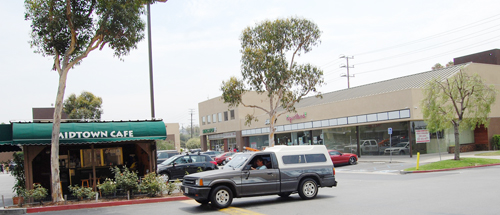 Rumors, accusations, and misinformation have been tossed about like ships in a storm since the shocking and abrupt closing at the Midtown Shopping Center of the AMF Midtown Lanes, beloved Maria’s Café and World on Wheels. The approaching closing of Orchard Supply and Hardware (OSH) and the Broadway Federal Bank, along with the coincidental purchase of adjoining land has got the rumor mill working overtime.
Rumors, accusations, and misinformation have been tossed about like ships in a storm since the shocking and abrupt closing at the Midtown Shopping Center of the AMF Midtown Lanes, beloved Maria’s Café and World on Wheels. The approaching closing of Orchard Supply and Hardware (OSH) and the Broadway Federal Bank, along with the coincidental purchase of adjoining land has got the rumor mill working overtime.
TNN decided to get the story straight and approached the developers, father, James R. Young, and son, Courtland Young, of Midtown Shopping Center Associates, for an interview. They were eager to communicate to the community, clear up concerns and share their vision of the Midtown Shopping Center moving forward.
TNN:Can you tell us a little of the history of your family’s relationship to the Midtown Shopping Center.
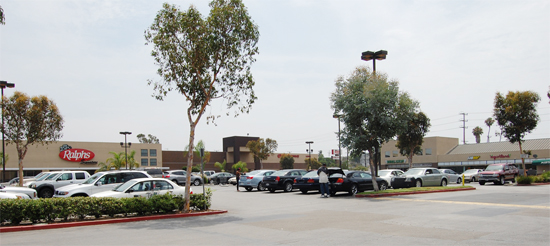 Court: When my dad got here in 1978, he bought the ground lease which was to continue until 2031. My personal history started in 2007. I began working with my father in redeveloping, retenanting and upgrading everything around the Shopping Center, and in the past few months we were finally successful in something James Young had been trying to do since the late '70s, which is purchase the underlying land from the owner, Catellus.
Court: When my dad got here in 1978, he bought the ground lease which was to continue until 2031. My personal history started in 2007. I began working with my father in redeveloping, retenanting and upgrading everything around the Shopping Center, and in the past few months we were finally successful in something James Young had been trying to do since the late '70s, which is purchase the underlying land from the owner, Catellus.
TNN:I remember James mentioning being committed to staying here after the riots even though the place was devastated. He saw the value of what the Center could become since it was central to an area of the city that was only going to grow. Can you talk a little bit about that?
COURT: The area was decimated in general post the ’92 riots, and there was a push for rebuild L.A..
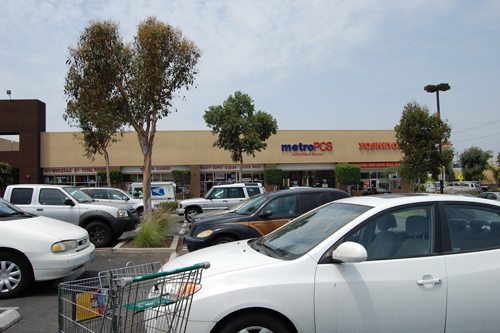 JAMES: Actually, there was a redevelopment district that stopped on the eastside of San Vicente and went down Pico, and it was right after the riot. It was created to sort of restore and improve the area, but it stopped on the eastside of San Vicente.
JAMES: Actually, there was a redevelopment district that stopped on the eastside of San Vicente and went down Pico, and it was right after the riot. It was created to sort of restore and improve the area, but it stopped on the eastside of San Vicente.
TNN:So you took it upon yourselves, without government aid, to help the Center get back on its feet?
JAMES: Yes. The only building that wasn’t completely destroyed was the Swap Meet, which was the current Orchard building, and there were 64 families, Korean mostly, whose family businesses were destroyed and taken away from them because of the riots. We tried to use that as a starting place. So it took us about three, four years to get the Swap Meet back open in a limited way. But it never got enough energy because by that time, all the people who used to shop at the Swap Meet were now going to what are called power centers to buy cheap goods or discount kind of things. And their shopping habits had changed, so we never got the energy back that we once had. And we finally had to close it because it never got critical mass as a business, and that’s when I started working with Orchard Supply.
COURT: Which was in about ’97 because they moved in, in ’98.
TNN:So you rebuilt all these buildings?
COURT:: Correct.
JAMES: We tore down all the buildings except Broadway Federal and the Bank of America because the configuration of of the Shopping Center, or what’s called a site plan, was 1960s, So we started a whole new site plan to basically attract better tenants, and better circulation, and better safety, as a matter of fact, so all those things came into creating the new site plan.
TNN:Some people in the community didn’t know you had been around this long. They thought you had just arrived with the purchase of the land.
JAMES: Well now you know.
TNN: Tell us about your vision for the Center.
JAMES: I’m influenced by Culver City. I’ve met with the mayor several times; he was a parishioner in my church. They have done as good of a job as anybody in creating a street-safe, fun, electric kind of atmosphere, and so I’m using them as a case study. But it has to be done in baby steps, in little, tiny steps. They did it block by block, store by store but I use the Helm’s Bakery Project as an example of what you can do with simple things, like just blocking off the street that used to go through, which was dangerous for our kids at church. They blocked it off and then they put in water features and other kinds of things that allowed several of the restaurants like the Office to come in. This is one of the first times the Office had come into areas like this. The opportunity of having an ambiance outside where you hear water, you have a safe environment, and there are no cars involved.
TNN:You’re thinking of water installations?
JAMES: Oh, all kinds of things.
TNN:One of the things that happened at the bowling center was that a lot of the seniors love to play dominos and they love to play chess.
JAMES: Cort and I have talked about chess.
COURT: A good example was one day I was going to LAX; I drove by Magic Johnson's, Ladera Heights Center, and outside of the Starbucks there, there’s a nice gathering daily of older folks drinking coffee, playing chess. That’s one of our inspirations.
JAMES: We can take concrete tables so that you can have space for dominos … or chess and all that kind of things. That’s what I mean by the concept I call restive areas.
It’s little, tiny steps. Unless we can get the kind of tenant that we’re currently talking to and maybe have a shot at, that will allow a new platform for us to go to the next step.
I used to drive down Rimpau [Ave.] every day when I lived up in Hancock Park. I could see house by house, how somebody who hadn’t taken care of it, sold it to somebody who was going to invest money into it. Now over the twenty-some years, all the way from Wilshire Town to Pico, it’s basically the same houses only with a whole new look. Each one fixed up one by one.
TNN: That’s happened all over here.
JAMES: I understand the frustration with communities who want it [the development] to have happened yesterday, but those things don’t happen until you set the platform. We went with the momentum of the Lowe’s Center, knowing that was going to create momentum for us. Part of getting the signature Ralph's store in here was because they knew that the Lowe’s Center was going here, but you can’t force it. You have to just wait for the momentum to do something that allows you to take it to the next step.
TNN:So the development will be done in incremental steps.
JAMES: Yes. Everything in life is incremental, and especially a development like this. Once you get a tenant that brings a certain customer in, that will attract other tenants who wanted that kind of customer, too.
TNN:There’s been some confusion from bigger stores about this area. They think of this area as not worth coming into because they perceive it as a low-income area, which is completely untrue. This is a very mixed-income community with a lot of middle income and upper income neighborhoods.
I’ve lived in my neighborhood 18, 20 years. When I moved in, I would say 70% of these beautiful old houses were run down. Now I would say they’ve been all bought up and restored beautifully. This is what’s going on around here.
JAMES: The other thing that you don’t have that you’re missing and you just expressed it beautifully, and what retailers look for, is density. This is one of the highest density areas in the city of Los Angeles and the most underserved from retail zoning. It has always been high density but it’s just better now because people have invested in the homes, rehabbed the homes.
TNN: People have been murmuring….. Orchard is closing. The Federal Bank is closing. The bowling alley has closed and all coincidentally happened with your purchase of the land, giving rise to rumors and confusion. You’ve even received angry letters. Can you respond?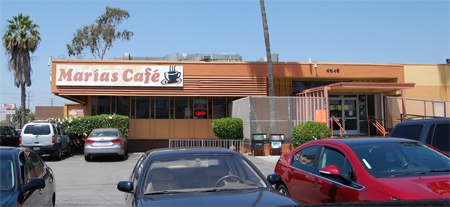
JAMES: We inherited, say the bowling alley lease, as a part of the acquisition but we were just a landlord, and they were just a tenant, and there was an agreement. We couldn’t do anything other than to allow the tenant to do whatever they needed to do in their own self-interest.
COURT: With AMF [the bowling alley and their tenants the roller rink and Maria’s], we inherited an old, expiring sub-ground lease that began in the ‘60s. We inherited a company that had filed back in November 2012 for Chapter 11 Bankruptcy, Protection and Reorganization. We gave the maximum amount of extension to the trustee in the bankruptcy court to allow AMF, who owns World on Wheels, as well to resolve their problems. It was the only under-one-roof bowling alley, roller skating rink owned and operated by AMF in the entire country. We gave them the maximum amount of time allowed to stay open for business, which included Maria’s Café, who was a subtenant of theirs, in hopes of them coming out of Chapter 11 Bankruptcy, maybe under new ownership and potentially trying to strike a deal thereafter. Their choice was to shut down the store. The lease initially was accepted, then it was rejected, which was all out of our control through the bankruptcy court. It’s just a term, accepting or rejecting leases, because this was a 50-plus-year sub-ground lease so it was always expiring in November of 2013. That’s what we inherited and that’s what happened and it was …
TNN:Why did they shut down before November?
COURT: We don’t know.
JAMES: We don’t know.
COURT: We never got a straight answer. They were paying 1960-type rents. Now Broadway Federal is a unique case, where they’ve shut down three of their branches in the past year. The regulators had placed them under Cease and Desist. They received a significant amount of TARP money, which as we heard, they only repaid a portion of, and their loans, commercially, were to churches, 100% of those were underwater.
JAMES: Or a high percentage of them were.
CORT: Yeah, a very high percentage of those were underwater so they’ve struggled to make it through this time. Subsequently, I know they’ve brought in new management. I believe the Hudson family has stepped aside. They closed down their main branch on Wilshire in order to raise some capital. And they shut down another branch and come October, as they also had a 50-plus-year sub-ground lease, they’ll be shutting down this location, as well.
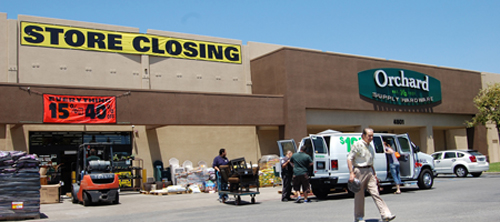 CORT: The last one is Orchard Supply Hardware. Within the past few weeks Orchard Supply Hardware filed through Chapter 11 Bankruptcy Protection, which everybody has read about in the LA Times. They are in the process of restructuring a relationship with Lowe’s upon approval from the courts. Lowe’s is looking at leaving the OSH brand as is, and being the parent company behind it, but only continuing to own and operate, I believe, say 75% of the stores and start shutting down the other ones. Unfortunately for us, as this OSH does perform well, they are in particular identifying this store, because it’s about 300 yards away from the newest Lowe’s 160,000 sq. foot mega store. I don’t think they want to cannibalize each other there, especially with the new OSH store that’s opening at the old Chrysler Dealership on La Brea. We were just notified of this very recently.
CORT: The last one is Orchard Supply Hardware. Within the past few weeks Orchard Supply Hardware filed through Chapter 11 Bankruptcy Protection, which everybody has read about in the LA Times. They are in the process of restructuring a relationship with Lowe’s upon approval from the courts. Lowe’s is looking at leaving the OSH brand as is, and being the parent company behind it, but only continuing to own and operate, I believe, say 75% of the stores and start shutting down the other ones. Unfortunately for us, as this OSH does perform well, they are in particular identifying this store, because it’s about 300 yards away from the newest Lowe’s 160,000 sq. foot mega store. I don’t think they want to cannibalize each other there, especially with the new OSH store that’s opening at the old Chrysler Dealership on La Brea. We were just notified of this very recently.
TNN: So the closing of Osh, the Federal Bank and AMF coinciding with your purchase of the land, is truly a bizarre set up of coincidences.
CORT: It is an unusually bizarre, never to be seen again set of circumstances.
TNN:It seems as if the stars were aligning. It is unusual but it’s exciting. Would there be any efforts to bridge with the Midtown Crossing mall?
JAMES: Like a physical bridge?
TNN: Like maybe a physical bridge? Or are you going to be on your side, they will be on their side and let the best plaza win?
JAMES: We want them to be as successful as anybody else, due to the fact that we have now created, as Jim Lowe says, this continuous shopping district. Between our 14 and a half acres and their 11 acres, we’re 25, 26 acres of commercial property. From Lowe’s, Smart and Final Extra, Ross, and Chipotle over there, to Yogurt Land and Subways and Wing Stops, and Ralph’s, and CVS over here, it’s nice, because there’s a nice mix between the two properties. There’s a nice balance. If you don’t find it over there, you’ll find it over here. I don’t know if a real bridge would ever exist over San Vicente.
TNN:So you’ve talked about a vision of the Plaza being a resource for people not just to come and shop, but to hang out, to meet with each other. You’ve talked about creating fountains and areas for people to sit and play chess and dominos and such. But what about the actual businesses that are coming in? Do you have a vision for the kind of businesses that you are going to focus on developing in here? Are they going to be family-owned, franchises, chains?
JAMES: It’s baby steps. Our goal here is to incrementally improve the quality of the tenant and the services that they provide to a higher and higher and higher standard. The majority of our community surveys indicated a need for more sit-down restaurants, health clubs, things like that, which aren’t in the area for whatever reason, and so we are currently negotiating with both of those. We’re dealing with top-quality national tenants because in this economy, you need credit tenants if possible because they facilitate the financing of the building, of new buildings. Ma and Pa businesses are not as interested in financing buildings because it has too much risk. We’re dealing with one unit that would be a sit-down family restaurant, and could be as big as 7,000 square feet. They’re very interested because everybody wants to get into this area now. But, we’re paying total attention to what the community wants and needs.
COURT: I just want to add that we still have about five or six Ma and Pa shops that have been here for over 20 years, who we know are fixtures of the community, and they will remain there.
TNN: Where did you do the survey?
JAMES: We did it at Ralph’s.
COURT: We created the survey ourselves. We passed them out at Ralph’s; we got approval from them. We passed them out at the coffee shop. We had some people take it out to Los Angeles High School. We collected several hundred.
JAMES: We just wanted to know what the community thought. We’re not survey people, but we just put together questions and ...
COURT: The through line was people wondering why they needed to go to the Grove if they could go to Midtown?
JAMES: That’s what we’re doing here, and each time we get to a new platform we’re going to make improvements, like we were talking this morning about something that would help attract better restaurants here.
COURT: And community activities…a few things that I know Jim did a long time ago, was a summer concert series.
JAMES: I held it on parking lots.
COURT: With some local musicians. We’re thinking about maybe trying to see if anybody would want to do a farmers' market here one day a week. Trying to add things to the shopping center that we’ve never seen before.
TNN:But the feeling I get is that you’re thinking very much about creating a community resource not just for shopping but also as a destination to come, have coffee, sit around, meet your friends.
JAMES: Absolutely, absolutely.
TNN:Councilman Wesson has spent a lot of energy getting development money, loans, and CRA support for developing the Crenshaw district. Are you getting any government funding?
JAMES: No. We have, over time, developed personal relationships with retailers all over the country and have the reputation of being a straight shooter and we have interest from many, many national tenants. And we just feel blessed that the community and the property are in a position to attract these key interests to come in and provide goods and services that the community doesn’t have and desperately wants.
photos by Dawn Kirkpatrick
{jcomments off}
Wren T. Brown Co-Founder of the Ebony Repertory Theatre
- Details
- Category: Interviews
- Published on Saturday, 18 May 2013 03:07
- Written by Dianne Lawrence
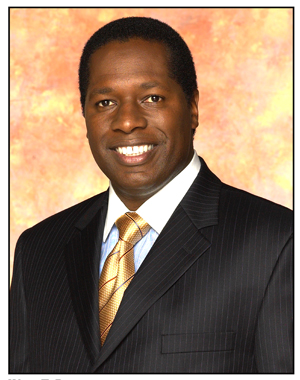
The first thing you notice when you meet Wren T. Brown is his gorgeous deep, full voice and the way he uses it to shape words and thoughts in a courtly and beautifully cultured manner.
So it comes as no surprise to discover his family history has deep roots in African American theater. It is a delightful surprise to find that his own roots are deep in our community.
As a boy, Wren often walked past the famous Ebony Showcase, at Harcort and Washington Blvd. When the Ebony, a critical player in the support and development of black theatre in Los Angeles, gave way to the current Nate Holden Performing Arts Center, Wren was an adult with a history of theatrical experience. He knew he was destined to make some kind of substantial contribution to the performing arts and when he saw the Center, with its multi-use 399 seat house and all the amenities of a world class professional theater, he knew what to do.
In 2007, partnering with the late, great Israel Hicks and with the assistance of Councilman Herb Wesson, they were able to secure leadership of the Center and establish the Ebony Repertory Theatre to fulfill his and Israel’s dream “to bring diverse, high standard, professional performing arts to the Mid-City community, as well as the greater Los Angeles area”. He has more than lived up to the vision with award winning productions and prestigious events. Their revival of A Raisin In the Sun directed by the extraordinary Phylicia Rashad was picked up by the Kirk Douglas Theater for a second run. It also picked up an Ovation Award for best play in a large theatre in Los Angeles and several Drama Critics Circle awards.
WREN T. BROWN: I am really, really honored to be here with you, Dianne. We have been working together -- we are neighborhood companions -- but it is a real pleasure to be here with you.
TNN: Thank you so much -- I appreciate that and I appreciate you doing this for us. Tell us about growing up in this historic community.
WREN T. BROWN: I was born and raised 150 yards from the front door of this theater -- 1926 Rimpau Blvd -- and I live presently in Lafayette Square, a three-minute drive away. This neighborhood means more to me than any community I have ever been a part of or contributed to. Finding myself in a role of cultural leadership within a community that nurtured and informed my life is a joy unspeakable for me.
First of all, we had everything. Within a short walking distance, right at the corner of Orange Drive and Washington Blvd, we had a wonderful drive-thru where you could get fresh eggs and fresh squeezed orange juice and things of that nature. Culturally, we had the Parisian room -- one of the greatest jazz rooms in west coast history -- right at La Brea and Washington. On Highland Ave and Washington was Tommy Tucker’s Playroom, a supper club, where wonderful artists came and where you always saw a huge presence of people dressed well and from all over this city. Coming down Washington Blvd east now from Highland, we had wonderful banks that were right on Washington Blvd. I remember the name Crocker Citizen’s Bank and Bank of America and Security Pacific. Coming down here to Harcourt was the It Club, a tremendous jazz room, where one of the finest remote recordings in the history of jazz was recorded, “Thelonious Monk Live at the It Club,” in 1964, the year of my birth.
On the south side of Washington Blvd, between Harcourt and Palm Grove, you had the Ebony Showcase Theater, founded in 1950 by Nick and Edna Stewart. I think they opened their doors here in ’65 or ’66. Because this was my neighborhood, I would walk past this venerable theater in my formative childhood years and see people who had made great inroads on Broadway and in television and on film, those who did voice-over work for Hollywood Studios; to see African American stars and stars of all ethnicities and hues come through these doors was not at all unusual for my childhood. Mr. Nick Stewart had played Lightning on Amos and Andy. He and my grandfather, Troy Brown Sr., were in “Swinging in the Dream” on Broadway in 1939. I would talk with Mr. Stewart about knowing my grandfather, who had died in 1944. It was wonderful to hear about him from someone who had worked with him.
Next to the It Club was Ms. Waverly, who is still alive. She had a wonderful little eatery there and made the finest hamburger I have ever eaten. Her family grew up very near here.
Savinar Luggage has been here all of my life, but also the parking lot for the employees here at the Nate Holden Performing Arts Center was a cleaners called ABC Cleaners. ABC Cleaners was owned by one of the nicest men God ever put breath in, Mr. Irving Berman. Mr. Berman was a Jewish man, and the woman who pressed there was one of the great joys and lights of my life, Ms. Sally Gonzalez. I remember her with such distinction. Going back the other way on the corner of my street, was Mr. Darling, with Darling cleaners, which is now on Harcourt and Adams. A wonderful, wonderful man, an inviting man. His children and I grew up together. Then there were Dr. and Mrs. Lee, two extraordinary people, who ran our neighborhood pharmacy. Laiken Drugs is still there with all of its signage, but hasn’t been open for many years. These were two extraordinary people. Dr. and Mrs. Lee were just wonderful, wonderful people who welcomed us like you couldn’t imagine into their hearts.
At Tenth Avenue and Washington we had a Ralphs Supermarket. Just past that we had a See’s Candy on Washington Blvd. On Vineyard and Washington we had a Five and Dime. We had a real, real community with a variety of goods and services. Prior to Willing Workers being on the corner of Rimpau and Washington, there was Shop Rite Supermarket, brought to our community by Mr. Ted Watkins, one of the seminal civic and social activists in this city.
TNN: What happened to the community?
WREN T. BROWN: Many things happened. During the late seventies and early eighties, we had the unfortunate rise of gang presence and we had a lot of flight from the neighborhood. I remember the Helms Bakery truck used to travel throughout these communities but there was a lot of robbery of many of the drivers so that really curtailed that presence. Additionally, the eventual crack epidemic devastated Washington Blvd, which was one of our huge arteries.
TNN: What years was the devastation happening?
WREN T. BROWN: Moving toward the late seventies, early eighties. Between the drug scene and the rampant prostitution along Washington Blvd and the goods and services going away. Certainly we always had other goods and services that were fairly close, if you went to Venice Boulevard and the Midtown Shopping Center, but there were a lot of reasons for what became, for a time, the devastation of a community I love most. This artery that I grew up on had such a brilliant diversity of people.
Every one of the shop owners of my youth possessed a kindness that I don’t see in the world today. There was a gentleman who had a shoe shine shop and his name was Papa and he always smoked very stubby cigars but was so large of personality. There was a gentleman here, Mr. John, who had been a pugilist, a fighter and he was what people would call a hobo or a wino; he had lost one eye. He could not have been kinder to the children of this community. Always had a word of wisdom, always was a supporter, always was an encourager.
TNN: Where did you go to school?
WREN T. BROWN: I went to all the schools around here. I walked to school every single day to Alta Loma Elementary, at 1745 Vineyard, and then to Mount Vernon Junior High which is now Johnnie L. Cochran Junior Middle School, and then went on to Hamilton High School. But the primary and junior high school of this community are the two schools that shaped my life.
TNN: Now, how did you come to the theater world?
WREN T. BROWN: It was something that had been in my bloodstream from the very beginning of my life. All four of my grandparents were theatricals. My maternal great-grandfather had his own theatrical troupe at the turn of the twentieth century called the New Orleans Strutters. His three children, his wife, his nephews and cousins, were all a part of his Vaudeville Show. My grandfather, his son, Lee Young Sr., was my living hero. He was a dancer and a comic on Vaudeville. As a child, he worked in blackface. He eventually was the first black staff musician in the history of Hollywood at Columbia Pictures in 1943. For many, many years he was the drummer and musical director for Nat King Cole. His sister, Irma Young, was also a dancer and singer and their brother, Lester Young, became the seminal and great tenor saxophonist, most prominently with the Count Basie Orchestra and then as a soloist. This is the man who named Billie Holiday ‘Lady Day’.
My mother’s mother was here at the Club Alabam and she was a torch singer in the clubs and big theaters here and in San Diego as a young performer. In addition, she worked for many years as a dancer and bit player in many Hollywood films. My mother’s mother was Ruth Givens.
On my father’s side, my grandfather, Troy Brown Sr., was the fifth black actor in Screen Actors Guild. He was from Memphis, Tennessee. He played Broadway; he played the London Palladium; he traveled the world as a comic and eventually as an actor in film and the theater and he worked in blackface as well. My father’s mother was from Mobile, Alabama; her maiden name was Bertha McElroy. She was a Cotton Club dancer and a chorus girl. Strangely enough, I was born into a very, very strong theatrical legacy. I knew at the age of five years old that I had an ability to communicate in a way that set me apart, seemingly, from other children my age. I felt that I had a calling on my life at five years old to be a communicator; I didn’t know if I was going to be an actor, broadcast journalist, or a minister, but I felt that tug on me as early as five years old.
TNN: Wow.
WREN T. BROWN: Then of course, as you grow, and I have always been a reader, I walked to grammar school and junior high school every day with a newspaper, every day of my life from first grade forward. I was always a reader, but I really learned about my family at seven and eight years old and I began to see photographs of their wonderful and illustrious careers.
TNN: When did you start acting?
WREN T. BROWN: I acted in my first play in grammar school at Alta Loma Elementary, right on Vineyard -- 1745 Vineyard Ave. There was always something greatly satisfying and gratifying about the expression of myself as an actor. When I was in the sixth grade, a very dear friend of my father’s heard that the Commercials Unlimited Talent Agency was looking for new faces and she thought I would be a great candidate. A man named Mr. Jerry, as I called him, took a photograph of me (headshot) at Queen Anne Park, which is on West Boulevard just south of Los Angeles High School. I did my first commercial during this period for a product called Funny Face.
I also had my first television appearance with my sixth grade class. The greatest teacher I ever had in my life, Mrs. Aladean Markham, passed away two years ago. She was a folk singer, a lover of literature and poetry; she taught us folk dancing. We went to Willoughby and La Brea to the now recently razed KCOP Channel 13 building, across the street from the Bargain Circus. We danced a routine to the song, The Hustle.
TNN: Then it just continued?
WREN T. BROWN: I went through my pre-teen and then teen years as an athlete, not interested with any specificity on being in the performing arts at that time, although I was always a great lover of the arts. The theater was always a very moving reality in my life. I rekindled my personal involvement as an actor in high school, at Hamilton High School, and it was there that I made the decision to make this my career of choice. I think when people talk about an acting bug, that’s too frivolous when you are really, really compelled to do something. You know, a bug is something we think of in temporal terms, you know, I have a little bug; you want to get rid of that. I know it’s a real play on words and I understand that, but it’s really something much more profound than a bug.
One day I was in the school auditorium rehearsing Oklahoma. I was not on stage at the time and had noticed a man who was new to our environment so I said, “Hello, my name is Wren Brown, welcome, and your name?” He said, “My name is Bob Preston.” I said, “Well welcome, I hope you enjoy yourself." The next day, one of the greatest teachers in Hamilton High School history, Dr. William Teaford, who is unfortunately no longer with us, said to me, “Wren, did you meet a man named Bob Preston yesterday?” I said, “Yes.” He said, “Well he’s an agent at the William Cunningham Agency on Robertson close to Wilshire Blvd. He’s very interested in meeting you if you are interested.” I went in, I took the meeting after school, like within the next week, I started cold reading a piece of script for his assistant Dinah and he said, “Dinah, have you given him any notes or was he reading like this by himself?” She says, “No, he was reading like this.” He said, “Let’s sign him.” That’s how the first agent at that time in my life came to be.
On the 17th of March 1982, 30 years ago now, I did my first professional job as a young adult, and consider this the beginning of my career. I got the first-ever national Chicken McNuggets campaign, with the Leo Burnett Agency out of Chicago IL. So I had my first agents when I was in the sixth grade when I did the Funny Face commercial, but the agency that launched my career was the William Cunningham Agency and Mr. Bob Preston.
TNN: How old were you?
WREN T. BROWN: I was seventeen when I did that first job. I then went to the Inner City Cultural Center, which was located at 1308 S. New Hampshire -- New Hampshire and Pico. At the Inner City Cultural Center, I met everybody in the industry who had set a real strong example for me -- actresses and actors of all colors-- but particularly the strong working and star presence of the black acting community. They all came to the Inner City Cultural Center.
TNN: What was that?
WREN BROWN: The Inner City Cultural Center was founded by a Dr. Alfred Cannon and the seminal Mr. C. Bernard Jackson, born out of the devastation from the 1965 Watts riots. So out of the ashes, that phoenix rose, one of the first intentional multicultural performing arts centers in the country. It was first on Washington Blvd before it went up to New Hampshire and Pico, but that place changed my life forever.
TNN: Okay. Now we’re talking late teens? How old are you today?
WREN T. BROWN: I am 48 today. That’s the beginning of my career. Being represented by the William Cunningham commercial agency, doing commercials, finding theatrical agents who would handle television and film, and perhaps what we call the legitimate theater. Finding and navigating, learning about all of the trade magazines, trying to be in the right place at the right time, studying acting, studying voice, working on the stage to cultivate the instrument that I thought was there, that’s what it was about.
But this neighborhood, these streets, these personalities, absolutely shaped and then formed my life in a way that I can never be separate from. The beauty of the homes of West Adam Historic, the architecture of a Golden State Mutual Life, the Craftsman Homes, the Californian Prairies, the diversity of architecture, Lafayette Square, Victoria Park Circle, Wellington Square, and the diversity of those homes. I grew up in a very large Craftsman Home built in the early twenties. From that aesthetic to the soul of the people, the neighborhood and the kids that I played and grew up with and the laughter in the summers in the streets, and football in the streets, and a real community with camaraderie, where you did not sass adult people, that the other adults on your street were an extension of your home, if you misbehaved, those reports would come back to your home. It was a community, and this is a line borrowed from the brilliant playwright Jeff Stetson, who said, “I am not for you because you are for me. I am for you because you are me.” That’s the community we had. That is the community we had.
TNN: That’s fantastic. You speak so beautifully. Do you write?
WREN T. BROWN: Thank you for your acknowledgement. No, I don’t write formally, but I certainly have begun over the last several years with the founding of Ebony Repertory Theatre. My wife is my chief encourager and other very dear friends have always been encouragers of my writing. Conveying my thoughts and conveying my heart, means a great deal, so in the last decade and a half I’ve begun to write more, not in a formal way, but certainly the most formal reality is the founding of Ebony Repertory Theatre. I began by writing a proposal, trying to write a vision down on paper. I write something for every program, so there is a public presence of my writing now.
TNN: I would imagine you are a shoe-in for playwriting.
WREN T. BROWN: Well, I don’t know. That’s something you have to study in a really earnest way and I don’t have that time at this point. Thank you for acknowledging that you think that I might do that well.
TNN: How did you find your way to the Nate Holden Performing Arts Center and back to the neighborhood, and what happened?
WREN BROWN: I left Rimpau Boulevard to be married, I was married in Washington D.C., but when I returned home it was this neighborhood. I lived for a very short period just north of here, then for the last 20 ½ years it has been Lafayette Square, a five to seven minute walk from the street where I was born and raised. I have never left this community. I earnestly believe in giving forward. I think a lot of times we have heard in the nomenclature of the world, giving back, but I think giving forward is really what it is.
Walking past this building, driving past this building as it was being built, watching the foundation being poured, watching the cornerstone being poured, and knowing that this terra firma, this earth here at 4718 West Washington Boulevard had been theatrical terra firma since 1924. This was once the Rimpau Theater and then it became Jazz at the Metro, this was an Art Deco 750 seat single screen movie theater in the twenties, silent movie house of course, the transition to talkies didn’t happen until 1929. Knowing that history and knowing all of the personalities and all of the art and creativity that had come from this ground, I refer to it as theatrical terra firma.
Certainly from 1966 forward and all of the glorious years of the Ebony Showcase Theater, so many wonderful artists, seeing it and walking past it every single day of your life, knowing there was a dance studio here, there was a theater here, there was a print shop here, Mr. Stewart and Mrs. Stewart had film cameras, and film technique and camera classes were taught here. But seeing this new building being erected, I always said that I really, really hope that it doesn’t become a white elephant, I really, really hope that there is a vision because it was so beautiful as it was being constructed, and it was so massive, it was the largest thing built and the newest thing built in this neighborhood in my entire life. Nothing had been built of this magnitude or at all really from the time of my birth to this new edifice.
TNN: Yeah, it was a shocker.
WREN T. BROWN: It would become The Nate Holden Performing Arts Center. This level of investment had never come. I looked at it with great pride and great joy, but with great hopefulness that it would be well utilized, and I have always had a personal vision that this community; this neighborhood deserved high standard professional performing arts. We always had to go to Hollywood; we always had to go to downtown Los Angeles, to Culver City, maybe to Wilshire Boulevard close to Beverly Hills where there were some legitimate theaters. Certainly, there were movie houses along Crenshaw, La Brea, and some on Adams, but where was the Mid-City wonderful, beautiful place to come to with high standard performing arts being presented? There were always things presented on Wilshire Boulevard at the Masonic Temple, but again, that was the Masonic Temple, and its beautiful theater.
I always had a vision. The Wilshire Ebell was another one, but it was a rental house in that way, but I always had a vision of wanting to occupy this theater with a resident company and to give this community the best of what I had learned from around the world, the best of what my life had garnered, I wanted to give it to this community at a professional standard, and so that became the genesis for the formation of Ebony Repertory Theatre.
TNN: You were looking at the building going, 'well look at this'.
WREN T. BROWN: Yes. At the time, I was very much in the throes of a successful acting career, thank God a successful marriage, and raising children. Going into the theater business specific was not a goal of mine, as producer, founder of a theater company, per se, in the immediate sense. I was an actor in the theater, but this property and the possibility here moved me very deeply, and so I thought about it often.
That was the genesis of my thoughts.
TNN: How did you come in here?
WREN T. BROWN: The CRA built the building and ran it for a very short period, it was then transferred to the Cultural Affairs Department of the City of Los Angeles, and the first five years of its presence from 2003 until 2008, it was run as a rental house. Of course the Cultural Affairs department and their budget had been slashed dramatically, then, I began to hear that an RFP was to go out for the managing and operating of the theater and that is the process that I became a part of.
Writing a white paper that would really articulate a vision for a high standard professional performing arts center, that would produce professional theater like the things that you would see at the Mark Taper Forum, the Kirk Douglas Theatre, the Ahmanson Theatre, The Huntington Hartford Theatre, now the Montalban Theatre, the Old Westwood Playhouse, now the Geffen Theater. The standard you would get at those venues is what I always felt this community deserved, so from a production perspective, that was a vision of mine to bring that high standard right into this building, to present the finest theater, the finest actors, the finest music, the finest lecturers, and the finest dance, so that’s what the vision was for this building where the founding of Ebony Repertory Theatre was concerned. To have a resident theater company both be the resident company and operator of this facility to work assiduously to bring all those things articulated in that proposal to this community.
TNN: Who did you propose it to?
WREN T. BROWN: We proposed it to Councilman Herb Wesson. Councilman Herb Wesson got behind this vision in a real tremendous way. He really embraced my personal narrative being so directly tied to this community, one who knew this community as well as I know this community. My knowledge of this community is not a superior ethic to anyone else’s knowledge, but I have a lot of knowledge, and I have a lot of love and I have a lot of sweat equity in this community. I have abraded my arms, legs and head in this community. He really was ensnared that someone so homegrown would have done as well as I have been blessed to do in the arts, along with our late founding artistic director, Israel Hicks, who was just a seminal and giant man. Councilman Wesson was very impacted by the fact that we had someone in the philanthropic arena, who was a part of my core kitchen cabinet of persons, someone who worked in the political world, and also someone who worked in social justice and civic engagement. He was very proud of Israel, with his huge directing resume in the regional theater, Broadway Theater, and being one of the finest educators and administrators in the conservatories of America, he loved that component, and also that we had someone who had been trained at the Yale School of Drama in theater management. These individuals were all eventually part of the core team that we presented. It went through that process and it was decided that Ebony Repertory Theatre possessed the components to come and be a resident company and the operator of this facility, and that’s how it transpired.
TNN: That’s fantastic. How long have you been here now?
WREN T. BROWN: We took over in February of 2008. Four years.
TNN: That’s when the Neighborhood News started. We are about to have our fourth year anniversary this August. Well Wren thank you so much for sharing this story and bringing the history of our community's theatrical roots, so tied in with your own, to our readers. We are lucky to have you and The Ebony Repertory Theatre.
Blaire Baron Larsen & The Los Angeles Drama Club
- Details
- Category: Interviews
- Published on Thursday, 20 December 2012 00:39
- Written by Chelsee Lowe
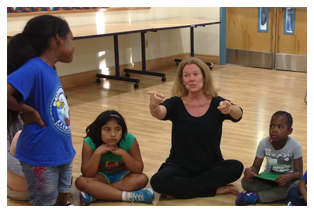
All The World's A Stage and All The Children Merely Players
“Away! Thou’rt poison to my blood.”
“Thou art like a toad; ugly and venomous.”
Visit the multipurpose room of the Baldwin Hills Library any Friday afternoon and you will undoubtedly hear youngsters ages 7 to 14 hurling such insults at one another. The children are a part of the Los Angeles Drama Club, a non-profit organization based in Mid-City that aims to create a safe and creative artistic community for local youth with the help of great works from Shakespeare. The Neighborhood News sat down last month withLADC’s Artistic Director Blaire Baron Larsento get a better understanding of how this organization came to be, and how it plans to grow in the future.
BL: Drama Club started in 2005 in my backyard on Highland. There were six kids, and they all walked to get there. We had a shoebox for them to donate money into. [Eventually] the backyard got to be too small. So, we took it to the Lost Studio on La Brea, and we started charging for classes. We rent the space and it’s a lot -- $1,600 per month.
TNN: What kinds of activities do kids in The Los Angeles Drama Club participate in?
We’ve been doing three to four Shakespeare shows per year, plus [we participate in the] Los Angeles Shakespeare Festival. We also do yoga, improv, and we do a social justice theater program that teaches all about the different “-isms” – racism, sexism, et cetera -- and how to stick up for people, rather than just watch conflict.
Shakespeare’s plays can deal with some weighty subject matter for such young kids. Do you alter the plays?
We do not believe in paraphrasing in any way. They are speaking Shakespeare. We do edit for length, otherwise some plays would be 4 hours long. We try not to break the poetry or the scansion. We also cast first, so that then we know whose abilities we’re working with as we shape the play. We did Hamlet recently, and we cast four Hamlets [and they share the role] so we didn’t have to bastardize the play or those speeches you have to hear. We’re doing the same thing with MacBeth; we have three Lady MacBeths and they later become the three witches. And when we planned for Romeo and Juliet, we removed the sexual content and language.
How do the kids know what they’re saying, especially
when so many of the words used in Shakespeare’s time are no longer common?
We decode the language together, and [the students’] eyes widen and they say “that’s what that means?!” Our executive director Julia Wyson and I have private sessions with every single kid, after school, on our own time. When we’re in production, [Julia and I] go to their houses, we meet them at the theater, and we coach them outside of whole group rehearsal. We go over who they are, what they say, why they say that.
It must be gratifying to watch them grow as they handle the language. What’s the most rewarding part of your work?
One of the most rewarding things is seeing the light bulb go on in a child, especially in the kid who came in with what looked liked a tiny flame about to go out. When they prepare and perform, something changes. My favorite place to be during a show is the wings. I watch what happens when [the kids] come off stage and how they react when they finish. Watching the transformation from a kid in rehearsal to a young artist -- I get to catch that moment. That’s really cool. That’s why I became an actor, and I get to recreate that experience for them.
We know that you have your sights set on getting your own theater space right here in Mid-City. How’s that going?
This is where I live, and this is really what I’ve always wanted to do. Right now we’re in the Baldwin Hills library, and it’s super busy. People wander in, announcements go off while the kids are trying to concentrate. But it’s free and it’s close, so thank goodness for them, but it’s not a theater. That’s why we rent The Lost -- the kids get to do Shakespeare in a real theater, with a green room and a lobby and backstage and a light booth. Wouldn’t it be cool to have an actual theater space of our own? A haven for the neighborhood kids?
Why Mid-City? How did you come to live here yourself, why do you want to house LADC in this part of Los Angeles?
My father, grandfather, and great grandparents lived in a house in West Adams on Harvard and Adams. I grew up at Orange and 1st Street. When it came time [for me] to buy a house, I looked in Jefferson Park and then this house in Mid-City and it felt like the house. I witness the kids on my street -- there’s a need here. [If they come to LADC], for at least those two hours we know they’re not on an electronic, and we know they’re learning to communicate better and to make eye contact with other human beings. They’re learning storytelling, too. We need something to put Mid-City on the map. Why are we forgotten? I want to stick Drama Club right in the middle.
How much would you need annually?
We’ve been calling around about rentals on Washington and along Adams, too. There’s nothing under $3,000 per month, so $36,000 a year. It’s a lot. Or we could use spaces owned by the city, like Nate Holden Performing Arts Center. We’d obviously rather do that, and not have the funding go to landlords but to costumes and teachers instead.
Let’s talk about fundraising. Right now, how do you make ends meet?
For the last decade almost, we’ve been a word of mouth troupe. We’ve never advertised -- there’s no money for that. Word of mouth from the moms, and our executive director Julia Wyson built our beautiful website. We’ve also worked with the neighborhood councils in the area as well. We went to Mid City Neighborhood Coundil (MINC) first because it’s our neighborhood council. It was end of the funding line in July, and we asked for a $899 grant and we got it for Shakespeare in the City. The next week we went to the West Adams Neighborhood Council, announced who we were, then we went again the next month and we made our pitch. The board agreed to give us the whole $9,000 dollars right then and there, and in three weeks we had that money.
Your website mentions scholarships for those families who can’t afford fees. Are they hard to come by?
Whoever qualifies for a scholarship gets one. If they’re willing to get to the Lost Studio and they qualify, we make it happen. We make up for it in fundraisers and in the tuition of others.
You held an annual gala fundraiser in November. Tell us about it.
Our first gala Fundraiser has officially put us on the map. It was called “Tempest in a Teacup” - we served tea and wonderful food, thanks to a local merchant Foodink. We held it at the Magic Castle, and we were sponsored by SHOWTIME, so that all the funds raised will go directly to our arts and literacy programs. Performing Shakespeare opposite our kids was the infamous Jason Alexander, Keith David (Cloud Atlas), Laraine Newman, Alex Newell (“Unique” on GLEE), Jeremy Piven (Entourage), a Henson Muppet (Caveman!), Justina Machada (Private Practice), Moon Zappa, and Max Newfield (New Girl) and three comedians in Drag playing the Witches of Macbeth. Magicians performed from 2-3:30, then we held a raffle and we culminated with the benefit performances. It was a giant success. The work leading up to it was brutal, but it was all worth it in the end.
How are you going to spend the money?
We will use the $20,000 we raised to plan our next year without having to worry. We can plan to rent the Nate Holden Performing Arts Center if we have to. We can possibly rent our own space. $20,000 to us might as well be two million. A friend of mine started a similar nonprofit in a depressed, nearly deserted town in New Hampshire – first her theatre house came, then a coffee house opened. And now the town is thriving!! There’s something to be said about getting a functioning theater and a coffee house here. People will come and you will build community, a place for youth and the public to gather. That’s my vision for Adams or Washington. A theatre, a coffee house, a center! To be able to say to the kids living on 21st Street and Cloverdale; “Come on over to our theater.”
To read more about the Workshop CLICK HERE
More Articles...
- Papa Christo Talks Shop
- Running A Medical Marijuana Collective
- Interview with Laura Meyers
- Anthony Nicholas Remembers Rosa Parks
- Preservationista Laura Meyers Wins Coveted Martin Weil Award
- Keepin' It Clean
- Tony Nicholas of the Tom Bradley Family Source Center
- Grace Santana of the Longwood Highland Neighborhood Watch
- Ron Finley. Staying Active
- Minimizing Conflict in Community Groups
Yesterday8
Week22
Month22
All988350
Currently are 27 guests and no members online
Kubik-Rubik Joomla! Extensions


